#some have like 10+ simultaneously :Uc
Explore tagged Tumblr posts
Text
Unlikely Love Chapter 10 : Warnings Character death, Violence with Guns (minimal) and cursing
Was your team the right one?
How do we feel about Roman and Noella now?
Are you shocked?
More questions at the end.
Comment your answers below. ❤️❤️

At UCLA hospital
The doctors come out face Kevin and the bloodline and say " Cody is fine his injuries were not as significant as expected and he should be able to go home tonight." Roman says " and Noella "…. The doc says " Noella's injuries are localized to her abdomen, when the bullet went through it grazed her appendix so we did laparoscopic surgery to remove it the recovery time will not be long." Roman breaths a sigh of relief and says " so, will she be able to come home tonight if someone is able to watch her." The doctor says " I suppose, but we will send her home with some pain medication." Roman nods and turns to the others and says " can one of you please go get my room ready for Noella and a guest room ready for Cody please." Trinity, jimmy and Kevin say " Absolutely we can go get the rooms ready for them." Kevin and Jimmy give Roman a brotherly pat on the back, trinity gives him a gentle hug and they are off. Roman says " Jey are you going to go help." Jey looks down at his phone and says " Actually I have something urgent I have to take care of, sorry Uce." Solo notices the shift from his brothers calm demeanor to something more cold… but he doesn't dwell much on it. Roman turns to Solo and says " you take Cody and I will take Noella, I need a moment alone with her anyway." Solo nods and says " Just lay everything out their big man, don't be scared", then he is off to Cody's room.
In Noella's hospital room
Roman walks in and sees Noella laying in the hospital bed crying and he frowns. He hates seeing the women he loves in such pain and not being able to do anything about it. Roman sits down beside her gently grabs her hands and whispers " Noella, I know you probably do not want to talk to me but I need to get some stuff off of my chest, may I? " Noella says nothing but nods. Roman pulls a paper out of his back pocket gives it to Noella and says " These are the papers Cody gave me after the funeral when you ran off, they are fraternity test results." Noella reads through the paper drops it on the floor and throws herself into Romans arms. Roman responds immediately and wraps her in gentle embrace. Roman begins to whisper sweet nothings in her ear while simultaneously stroking her hair to calm her. When Noella calms down she pulls out of Romans grip looks him in the eyes and says " I….. i..m so..ooo so..r..y, I did that to you, you have been there for me through everything and I just did you like that I am so sorry." Roman gently grabs cradles her face with his larger hands wiping her tears and says " Nell, I would do what I did for you a million times over hell…. I would even die for you." Noella looks at him wide eyed and says " don't talk like that I am not that important." Roman leans in close his voice full of conviction and whispers in her ear " Dammit, don't you dare say you're not important, I care for you so much it hurts. " He continues and says with tears in his eyes " I don't just care for you Noella, I..I LOVE you, I always have and I am tired of pretending I don't." Noella pulls away from Roman wipes the tears from his face and says " Can we take thing's slow because ….. I love you too." After those three words come out of her mouth she pulls him in wrapping her arms around his neck and kisses him gently on the lips. Roman reacts with the same amount of gentleness. Noella realizes something in this moment Jey never made her feel this alive, this human when he kissed her, this is where I am suppose to be she thinks. They pull away from each other eventually, rest their foreheads against each other and smile like idiots.
At bloodline mansion
Solo helps Cody hobble into the house where he is greeted by Kevin and Jimmy who help him up to this room and Trinity goes in after with his medication and food. Everyone sits down and begins to make small talk. Before solo has a chance to sit down a notification pops up on his phone, its a camera from the driveway and there is a suspicious car. Solos protective instincts heighten so he grabs his gun, gets in his car and follows the suspicious vehicle at a distance. As soon as the person realizes they are being followed they slam on breaks and before Solo can react he rams into the back of the car.. hard. The two assailants hop out, walk to Solos car and see him almost unconscious gasping for air. One mystery man walks to the passenger door the other to the drivers side door, they notice Solo is half-conscious and barely breathing. The mystery man at the passenger side forces Solos head to the direction of the person at the Drivers side. He see's that it is his BROTHER JEY. Jey notices his shocked reaction smirks and says " Brother don't you know curiosity killed the cat. " Shockingly Sami then walks to the drivers side of the car to join Jey and just laughs at him. "WHY".. Solo chokes out. " Because if I can't have her no one can especially not Roman, Now let me put you out of your misery." Jey pulls a gun from his pocket puts it to his brothers head, pulls the trigger and laughs. Sami and Jey hop in the car and drive to the McEntyre estate. Sami asks " so you said their was a big surprise there what is it?" Jey smiles shakes his head and says " Well lets just say Finn called in a favor from his girl in Atlanta and Noella's friends are there a little tied up, Noella is not gonna know what hit her. She is so gullible she'll go with me anywhere." Jey and Sami laugh evilly and smirk.
Midnight Bloodline mansion
Noella had gotten to bed a while ago but not before Roman gently kissed her head and said " goodnight, baby girl, I love you." Noella was Awoken by a gentle push on her shoulder. She looks to see that it is Jey and sleepily says " Jey, what are you doing here." Jey smiles sweetly and says " I have a surprise for you, Bianca and the girls are here, they flew in because Trinity called them and told them what happened. " Noella softly gets up and says " Okay I'll go with you." Jey smirks to himself gently grabs her hand and leads her outside. Noella then feels a tap on her shoulder, thinking it was Bianca she turns around and is bashed in the head with a baseball bat. Jey says " Damn Sami that was a good hit." Sami smiles and they carry her limp body to the car.
Romans Study
Roman could not sleep for some reason he was in his study looking over some business plans when all of a sudden one of his cop buddies calls him. " Hello.. am I speaking with Roman." Roman says " Yes, joe this is him." Joe sadly says " We found your cousin Solos escalade crashed and he was in the crash." Roman says " IS he okay?" Joe says " No, somebody shot him execution style." Before Joe can say anything else Trinity runs in and says " Roman, It's Noella shes gone, like disappeared " Roman hangs up on Joe but before he can move a muscle a video pops up on his phone and on the video is of…..
Who is Finn's girl?
Do you think Jey will stay loyal to Sami and the others?
How will the Bloodline react to this betrayal, specifically how far are they willing to go to get her back?
tune into chapter 11 to find out.
@trippinsorrows @acute-crashout-jeyuso @usoinked @uceyliyahh @femdisa @mytribalnightmare @punksyeet @empressdede @eringobragh420 @officialeve24 @southerngirl41 @bossbitch-22 @purplementalitybluebird @amazinggirlsstuff
youtube
9 notes
·
View notes
Text
Rating Season 4 Chenford Moments
We're halfway through the season, and coming up on a mini-hiatus, so I thought it would be fun to rate the Chenford moments we got this season so far!
This is essentially a ranking of each episode in terms of overarching Chenford plot/content. All gif credits go to the lovely @chenfordsource ! Please feel free to reblog with your own rating/ranking/additional moments!
4x01 Chenford hug #1 and (almost) sleepover 8/10
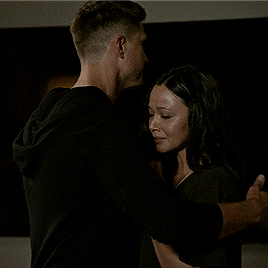
It feels like we had dreamed up endless possibilities for what could happen in the premier and it was almost too good to be true that one of them actually happened - Tim took Lucy home with him for the night and she almost slept in his bed!
She asked for a hug, to which he agreed with a "come here" (!) following which there was a verrry long look, and then: Lucy. almost. went. into. his. room.
I was almost in shock watching this scene, and nervous that something more would happen, which would have felt too soon, in my opinion. I love how they left the scene and personally it doesn't bother me that this moment wasn't brought up again because it was connected to the grief about Jackson.
We didn't get much more Chenford in this episode, and I think I would have enjoyed this moment so much more if it hadn't been in the promo but nevertheless this was a huge moment for them so 8/10!
4x02 Lucy pranks Tim with booties - twice! - and he compliments her 6/10
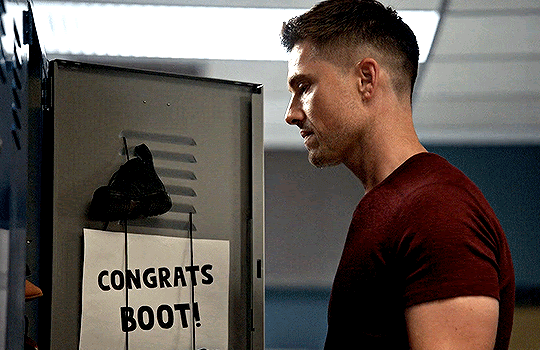
The prank! The (baby) booties! The locker room scene! Tim's smile! This was a welcome surprise in an episode where Chenford weren't even riding together. This gets a solid 6/10.
4x03 Lucy and Tim flirt banter about Lucy becoming Tim's go-fer aide 7/10
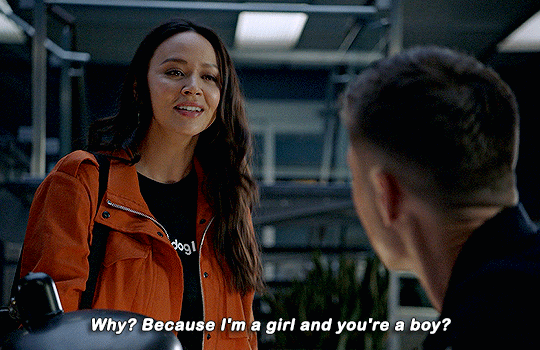
The lead-up to Chenford deciding to ride together again was almost even better than their later scenes actually riding together again.
The stubbornness, the way these two were openly bantering in the roll call room, and finally, that conversation at the end of the episode!
A conversation that gave us lines like: "a very handsome boy" and "screw what anyone else thinks?" which simultaneously made us think Tim might be aware of what is developing between him and Lucy, and also wonder if Lucy is anywhere close to beginning to think of Tim in that way.
I give this a heaping 7/10.
Although, this did leave me wondering: was this a step in the right direction, or was it just an additional obstacle they would need to overcome? I'm still 50:50 on that.
4x04 Tim and Lucy...spend some time working together? 3/10
In this episode...we had some screen time with Tim and Lucy together...! lol
I wrote another post pointing out some positives after this aired but aside from the Tardis comment, a moment when Lucy seemed to impress Tim with the state department, and them sitting close together in that truck, there wasn't much to go on. At least they were together for part of the episode before Tim disappeared? A generous 3/10.
4x05 Tim and Lucy talk about having babies together 5/10

The topic did seem to come out of nowhere, but we got Chenford talking about having kids, plus Chenford interacting with kids on the job. I still think it's foreshadowing. What more could a shipper want??
No Chenford for the second half of the ep though, unfortunately. 5/10
4x06 Tim and Lucy make another bet and continue to be competitive dorks, which everyone notices 6/10
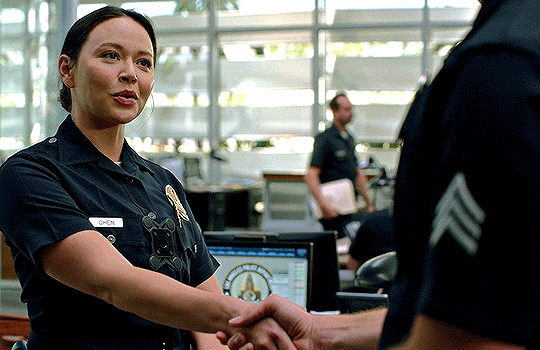
Another episode where Tim and Lucy aren't riding together (and so soon after getting "back together") but still have some quality interactions! That handholdshake? Talking to their other teammates about beating each other (we saw that exchanged look, Nyla and Nolan). Their full-body reactions at the end when Tim won they tied!
Giving this a 6/10, since in terms of progression to their relationship, there was a minor setback with the whole Ashley introduction.
4x07 Chenford have a bet rematch including a 🔥 van scene 7/10
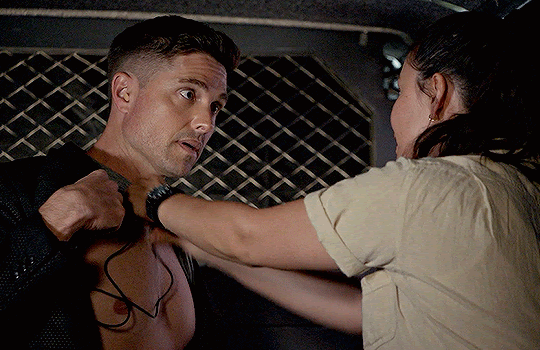
The competitive banter this episode was amazing, their case was fun, and we got the closest we'll probably ever get to an UC Chenford plot. I loved the entire van scene from Lucy criticizing Tim's outfit and essentially dressing him, to him hiking his shirt up higher than I'm sure was necessary, to Lucy not knowing where to look, to her highly entertaining commentary in his ear.
However, the ending left me confused, and I kind of wish the bet had been outside of work like the one in 2x03. Not ending the episode on a "high note" rounds this score down to a (still impressive) 7/10.
4x08 Lucy meets her future SIL and gives Tim some advice 4/10
It was cute to see Lucy and Genny bond in this episode, and Lucy's words to Tim at the end were definitely coming from the right place, but looking at this episode as a whole without what was to come in 4x09 - especially with the camera angles - didn't score very high for me in terms of overall Chenford plot. This was a great episode for Tim, of course, but we didn't get to see as much of supportive Lucy (yet!) as I would have liked. Oh, and we find out Tim is not single. 4/10
4x09 Lucy supports Tim investigating a case involving his dad, and we get our SECOND CHENFORD HUG 10/10

This episode blew me away. I want to thank whoever kept most of the Chenford stuff out of the promotional material, because it made it that much better. All of Lucy's scenes were with Tim, from helping out at his old house (I still want to know how that came about), to going with him to the station on their day off (his confident "c'mon Chen"!), to interrogating a suspect for him, to that final hallway scene and HUG.
Her "come here", paralleling 4x01, her reassuring "you're nothing like him", Tim just breaking down and melting in her arms...this whole storyline definitely felt like a significant milestone in their relationship and I loved this hug even more than their first. My only complaint is we didn't get to linger on it longer! 10/10
4x10 Tim needs Lucy's help yet again in his relationship 5/10

We get a hint of jealous!Lucy, them talking about Kojo, and of course the scene where she calls Tim a sweetheart. Having Ashley call Lucy was a welcome surprise and the show is being pretty obvious this time around about contrasting how well Tim and Lucy know each other vs their LIs. Plus we got another parking garage scene!
On the other hand, we got introduced to Lucy's new LI and Tim had an ending scene with Ashley so overall I'm giving the Chenford content a 5/10.
4x11 Tim is a supportive *partner* to Lucy while dealing with a personal case 5/10
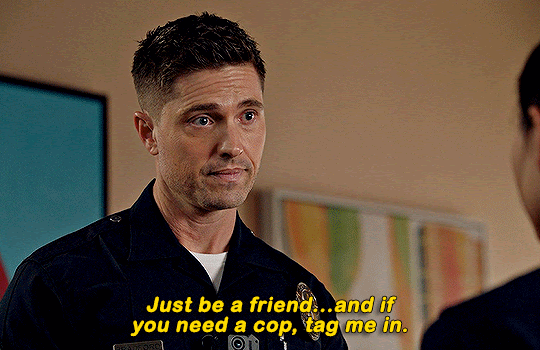
This was another good episode for Lucy (a continuation of what I hope is her upcoming "personal journey" from last ep), and it was nice to see Tim kind of take a step back and let Lucy take the lead on this one, while still letting her know he was there if she needed him. Overall there wasn't much development in their relationship, but we did get to see Tim in her apartment again, plus another interaction with Tamara, and they did have a sweet moment in the shop where he asked if she was ok. 5/10
4x12 TIM AND LUCY GO ON A [double] DATE 9/10

Unlike Tim, we were well fed in 4x12!! We have never seen Tim and Lucy act the way they acted on that date and it only highlighted how far they have come and how well they know each other. Stealing food, sharing inside jokes, finishing each other's sentences, sitting next to each other (turned towards each other!) and basically ignoring their dates - I think this exceeded our expectations and then some!
It was also great to see them solve the main case of the episode together. Personal space, what's that??
The only reason this isn't getting a 10 is because they each ended the episode with their LIs and not each other. 9/10
Final ascending ranking:
12. 4x04 Tim and Lucy...spend some time working together? 3/10
11. 4x08 Lucy meets her future SIL and gives Tim some advice 4/10
10. 4x05 Tim and Lucy talk about having babies together 5/10
9. 4x11 Tim is a supportive *partner* to Lucy while dealing with a personal case 5/10
8. 4x10 Tim needs Lucy's help yet again in his relationship 5/10
7. 4x02 Lucy pranks Tim with booties - twice! - and he compliments her 6/10
6. 4x06 Tim and Lucy make another bet and continue to be competitive dorks, which everyone notices 6/10
5. 4x03 Lucy and Tim flirt banter about Lucy becoming Tim's go-fer aide 7/10
4. 4x07 Chenford have a bet rematch including a 🔥 van scene 7/10
3. 4x01 Chenford hug #1 and (almost) sleepover 8/10
2. 4x12 TIM AND LUCY GO ON A [double] DATE 9/10
1. 4x09 Lucy supports Tim investigating a case involving his dad, and we get our SECOND CHENFODR HUG 10/10
If you've made it this far, thanks and I hope you enjoyed - would love to hear your thoughts too!
129 notes
·
View notes
Text
Brain cells protect muscles from wasting away
https://sciencespies.com/biology/brain-cells-protect-muscles-from-wasting-away/
Brain cells protect muscles from wasting away

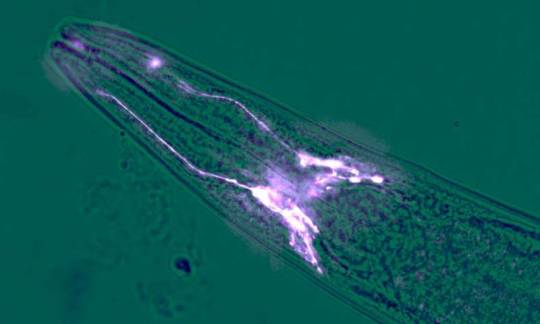
The head of a roundworm, C. elegans. The glia that regulate the stress response in the worm’s peripheral cells are highlighted. A mere four of these cells, known as CEPsh glial cells, protect the organism from age-related decline. Credit: Ashley Frakes, UC Berkeley
While many of us worry about proteins aggregating in our brains as we age and potentially causing Alzheimer’s disease or other types of neurodegeneration, we may not realize that some of the same proteins are aggregating in our muscles, setting us up for muscle atrophy in old age.
University of California, Berkeley, scientists have now found brain cells that help clean up these tangles and prolong life—at least in worms (Caenorhabditis elegans) and possibly mice. This could lead to drugs that improve muscle health or extend a healthy human lifespan.
The research team’s most recent discovery, published Jan. 24 in the journal Science, is that a mere four glial cells in the worm’s brain control the stress response in cells throughout its body and increase the worm’s lifespan by 75%. That was a surprise, since glial cells are often dismissed as mere support cells for the neurons that do the brain’s real work, like learning and memory.
This finding follows a 2013 study in which the UC Berkeley group reported that neurons help regulate the stress response in peripheral cells, though in a different way than glial cells, and lengthen a worm’s life by about 25%. In mice, boosting neuronal regulation increases lifespan by about 10%.
Together, these results paint a picture of the brain’s two-pronged approach to keeping the body’s cells healthy. When the brain senses a stressful environment—invading bacteria or viruses, for example—a subset of neurons sends electrical signals to peripheral cells to get them mobilized to respond to the stress, such as through breaking up tangles, boosting protein production and mobilizing stored fat. But because electrical signals produce only a short-lived response, the glial cells kick in to send out a long-lasting hormone, so far unidentified, that maintains a long-term, anti-stress response.
“We have been discovering that if we turn on these responses in the brain, they communicate to the periphery to protect the whole organism from the age onset decline that naturally happens. It rewires their metabolism, it also protects against protein aggregation,” said Andrew Dillin, UC Berkeley professor of molecular and cell biology and Howard Hughes Medical Institute (HHMI) investigator. As a result of the new study, “We think that glia are going to be more important than neurons.”
While the roundworm C. elegans is a long way evolutionarily from humans, the fact that glial cells seem to have a similar effect in mice suggests that the same may be true of humans. If so, it may lead to drugs that combat muscle wasting and obesity and perhaps increase a healthy lifespan.
“If you look at humans with sarcopenia or at older mice and humans, they have protein aggregates in their muscle,” Dillin said. “If we can find this hormone, perhaps it can keep muscle mass higher in older people. There is a huge opportunity here.”
In a commentary in the same Jan. 24 issue of Science, two Stanford University scientists, Jason Wayne Miklas and Anne Brunet, echoed that potential. “Understanding how glial cells respond to stress and what neuropeptides they secrete may help identify specific therapeutic interventions to maintain or rebalance these pathways during aging and age-related diseases,” they wrote.
How to extend lifespan
Dillin studies the seemingly simultaneous deterioration of cells throughout the body as it ages into death. He has shown in worms and mice that hormones and neurotransmitters released by the brain keep this breakdown in check by activating a stress response in the body’s cells and tuning up their metabolism. The response likely originated to fight infection, with the side effect of keeping tissues healthy and extending lifespan. Why our cells stop responding to these signals as we age is the big question.
Over the past decade, he and his colleagues have identified three techniques used by worms to keep their cells healthy and, consequently, longer-lived. Activating the body’s heat shock response, for example, protects the cytoplasm of the cell. Stimulating the unfolded protein response protects the cells’ energy producing structures, the mitochondria. The unfolded protein response is the cell’s way of making sure proteins assume their proper 3-D structure, which is crucial for proper functioning inside the cell.
His latest discovery is that glia, as well as neurons, stimulate the unfolded protein response in the endoplasmic reticulum (ER). The ER is the cellular structure that hosts the ribosomes that make proteins—the ER is estimated to be responsible for the folding and maturation of as many as 13 million proteins per minute.
“A lot of the work we have done has uncovered that certain parts of the brain control the aging of the rest of the animal, in organisms from worms to mice and probably humans,” Dillin said.
Two other interventions also increase lifespan in worms: diet restriction, which may call into play other anti-aging mechanisms, and reducing the production of a hormone called insulin-like growth factor (IGF-1).
Dillin’s discoveries have already led to new treatments for diseases. He cofounded a company, Mitobridge Inc. (recently acquired by Astellas Pharma Inc.), based on the finding that certain proteins help tune up mitochondria. A drug the company developed is now in phase II clinical trials for treating the damage that occurs when kidneys restart after sudden failure, such as during an operation.
He cofounded another company, Proteostatis Therapeutics, to develop a treatment for cystic fibrosis that is based on activating the unfolded protein response to repair ion channels in people with the disease.
The new discovery about how neurotransmitter and hormones impact the ER could have implications for diseases that involve muscle wasting, such as Huntington’s disease and forms of myocytis.
Glial cells
In 2013, Dillin and his colleagues discovered that boosting expression of a protein called xbp-1s in sensory nerve cells in the worm brain boosts the misfolded protein response throughout the worm’s body. Shortly afterward, postdoctoral fellow Ashley Frakes decided to see if the glial cells enshrouding these neurons were also involved. When she overexpressed the same protein, xbp-1s, in a subset of these glia (cephalic astrocyte-like sheath glia, or CEPsh), she discovered an even larger effect on peripheral cells, as measured by how they deal with a high-fat diet.
Frakes was able to pinpoint the four CEPsh glia responsible for triggering the ER response, because the C. elegans body is so well studied. There are only 959 cells in the entire worm, 302 of which are nerve cells, and 56 are glial cells.
The CEP neurons and CEPsh glia work differently, but additively, to improve metabolism and clean up protein aggregates as the worms slim down and live twice as long as worms without this protection from a high-fat diet.
���The fact that just a few cells control the entire organism’s future is mind-boggling,” Dillin said. “Glia work 10 times better than neurons in promoting this response and about twice as good in extending lifespan.”
Frakes is currently trying to identify the signaling hormone produced by these glial cells, a first step toward finding a way to activate the response in cells that are declining in function and perhaps to create a drug to tune up human cells and stave off the effects of aging, obesity or other types of stress.
Frakes also found that the worms slimmed down because their fat stores, in the form of lipid droplets, were turned into ER. Another research group in Texas has shown that activating xbp-1s in the neurons of mice also has the effect of reducing fat stores and slimming the mice, protecting them from the effects of a high-fat diet and extending their lifespan.
“When they activate it in the neurons, they see the liver getting rid of fat, redistributing metabolic demands,” Dillin said. “I think we would see the same thing in humans, as well.”
Explore further
Stem cell technology offers new insight into motor neuron disease
More information: Ashley E. Frakes et al, Four glial cells regulate ER stress resistance and longevity via neuropeptide signaling in C. elegans, Science (2020). DOI: 10.1126/science.aaz6896
Provided by University of California – Berkeley
Citation: Brain cells protect muscles from wasting away (2020, February 21) retrieved 21 February 2020 from https://phys.org/news/2020-02-brain-cells-muscles.html
This document is subject to copyright. Apart from any fair dealing for the purpose of private study or research, no part may be reproduced without the written permission. The content is provided for information purposes only.
#Biology
65 notes
·
View notes
Audio
10/5/20.
Finally...a band I to which I often refer, buick, has reissued their only release in all of its glory. Originally released in 1992, this band was certainly a product of it’s time, but ahead as well. Yes, there are obvious (as the band concedes) nods to Sonic Youth. But there is so much more here. This was recorded well before the “formation of Mogwai, Godspeed You Black Emperor, Explosions in the Sky”. To me, this sounds as vital today as it was back in the early 1990s. In fact, Scott’s mentioned that his “favorite reference to possible influence[s] came from Thin White Rope's Guy Kyser when he stated after one of our shows, "You sound like Dick Dale with his brains knocked out." This is made all the more funny since I didn't know who Dick Dale was at the time.”
buick was Scott Lawrimore (guitar) and Jeff Clark (drums). While a drum-guitar duo isn’t weird today (Japandroids or No Age come to mind), in 1992 there wasn’t a band like them (maybe Spinanes...but not really).
Generally speaking, the band wasn’t entirely happy with the original mix - both felt it missed their quiet/loud arrangements. So, Scott enlisted John McEntire (Tortoise, The Sea and Cake) to remix.
But, only a guitar, and drums? How do you get this much out of two instruments. I asked Scott Lawrimore to comment:
How did you get the sound you did (on guitar)?Most cuts only have one guitar —like in our live performances—recorded in one take on two tracks. One mic was on a Fender Twin Reverb (made in the same year I was, 1970) in a large gym-sized room, and one mic was simultaneously capturing a 4x12 speaker cabinet in a small tiled bathroom. The bass and mids were turned waaaaay up, and the treble ratcheted down on the Twin to counter the jagged, jangling highs produced by the humbucker pickups on the Rickenbackers I used for most songs. Since we were just guitar and drums, all songs use open tunings and those bass-heavy amplifier settings to flesh out a ringing wall of sound behind the main guitar phrasing. I'm sure the tunings have official musical nomenclature, but I discovered them on my own through trial and error. As a self-taught, unconventional guitarist, open tunings helped me to 'find my sound' while also cutting me slack for not being anywhere near a virtuoso. There were four different guitars used for the album: a 1990 solid-body Rickenbacker 610 (for Lucy Conrad, Excellent Liar); a 1980 hollow-body Rickenbacker 330 (for Homage to Lucien Freud, Badhead, The Moon is Not a Yellow Sow, and Immortality); a 1970 Fender Jaguar (for Phrenology, and Brown Blackstars); and my first guitar, a sweet $100 pawn shop Les Paul copy (for Graves). The hollow-body Ric was my preferred guitar because it produced the most controllable 'voiced' feedback (a ridiculous amount, actually). Typically this would not be sought after, or embraced, but everytime you hear feedback on the album, it's intentional and coming from that 330. I always loved showing up to gigs with that guitar and the audience assuming we were going to whip out some Byrds or R.E.M. jangle, and then SCREEEEEEEEEECH!!!!—that first ear-piercing feedback driving half the audience out of the room...
Did Jeff just get to create his own sound?
Origin Story:[Scene opens on the crunchy, tabouli-stained Coffee House of UC Davis just before the summer break of 1990; Scott is behind a cash register wearing a t-shirt he recently spray-painted with the word "Hectic" under a smelly thrift store suit jacket three sizes too big; Jeff approaches wearing an On-The-Waterfront-leather-jacket over a 10,000 Maniacs t-shirt, his grease-slick-black hair partially hidden by a Stanford baseball cap.] Jeff [apropos of nothing in particular]: Wanna start a band? Scott [thrown off by 10,000 Maniacs shirt]: What do you play?J [confidently]: Nothing yet, but I'm going to teach myself to play the drums this summer.S [skeptically and expecting to maybe never see Jeff again]: Ok. Let's try to get together when you get back... Not-such-a-spoiler Alert: Jeff taught himself to play the drums that summer. Apparently he holed himself up in an unused bedroom of a house he was taking care of in southern California and tried to play along with the first two Throwing Muses albums that he had on constant repeat. Funny in hindsight that that is the band he chose considering what we ended up sounding like, but if you listen carefully to their songs like Call Me or Juno, you hear a lot of what was to become Jeff's rumbling tom work and syncopated fill sensibilities. In terms of whether I had a hand in Jeff's sound for our songs, the short answer is "no." When we played together for the first time, I had figured out all the parts for precisely one song—we called it First Song for a long time before naming it Homage to Lucien Freud for the original CD. For the opening chord progression, and just to get us started, I asked Jeff if he could play the drums of Sonic Youth's Tunic (Song for Karen) from the Goo album that had been released that summer. Of course he could. Perfectly. We played that six-chord progression three or four times through like we had been playing together forever when someone banged on the door yelling for us to "turn it fucking down." That was the abrupt end of our first session, but set the tone for everything that was to come... The fact that Homage to Lucien Freud now begins with Jeff's rumbling toms and bears little resemblance to Tunic is a testament to how all of our songs tended to evolve collaboratively. I would have a number of 'parts' or quiet/loud 'moments' or remedial-math-rock 'transitions' that I would play for Jeff and then he would figure out all the drum details for those sections. I had an ear and desire for song dynamics, but it was Jeff that perfectly filled and requited them. Learning those transitions and moments was key, but many songs had sections that we never played the same way twice—the call-and-response section starting at the 1:38 mark of Graves, for example, or the harmonics-to-mayhem-chord section starting at 1:54 mark of Badhead. When we played live, I would simply indicate to Jeff that a change was coming and he would be there with something amazing.
Scott Lawrimore is currently in London, UK (and has had a full career in art/curating/teaching), and Jeff Clark is in Ypsilanti, Michigan (and has had a full career as a graphic designer). This album was originally released on Lather Records (Sacramento, CA). The reissue is self-released.
#buick#Scott Lawrimore#Jeff Clark#Lather Records#Sacramento#California#London#UK#Sonic Youth#Mogwai#Explosions in the Sky#Godspeed You Black Emperor#Japandroids#No Age#John McEntire#Tortoise#The Sea and Cake#Spinanes#R.E.M.#The Byrds#Rickenbacker#Dick Dale#Guy Kyser#Thin White Rope#Ypsilianti#Michigan
2 notes
·
View notes
Text
Workouts, Supplements, and Addressing Misconceptions about Working Out
Blog IV
My first blog post titled “From the darkest of times to the best of times — All it takes is determination, hard work, and a realization that you can do it” talked about my weight loss journey of going from 221 pounds to 172 pounds. This journey required a lot of hard work, dedication, and discipline. I had to revamp my diet, spend a lot of time researching diets and exercises, and most importantly had to start exercising. I experienced a lot of setbacks throughout this journey, which is to be expected when getting into fitness, but it is how I persevered and responded to those setbacks that allowed me to achieve my goal and encouraged me to continue on my journey because my journey is far from being done. I am constantly trying to improve my health and wellbeing while learning new and innovative exercises and information about fitness that I try to incorporate in my life. In my first blog, I did not get into the specifics of what I was doing on a daily basis to lose weight and achieve my goal; therefore, this blog post talks about what I did and still do to achieve the physique that I wanted so badly, along with addressing misconceptions that are commonly held about working out.
My workouts
My workout regimen, or workout “split”, consists of working out 5-6 days per week. I typically work out every muscle group once per week and then will choose a muscle group to work out twice. I typically try to work out my chest twice during a week as my chest is my weakest muscle area. When I am trying to cut weight (i.e. trying to lose body fat and become leaner), I do cardio around three to four times per week for 30-45 minutes as well as abdominal exercises. The following is my workout split for each day followed by an example workout, even though every workout I do incorporates different exercises and is constantly changing.
*Please note — if you do not know what an exercise is, I encourage you to Google it and find a video on how to do the exercise with proper form. Proper form can save you from injury as well as help you get the most benefit from the exercise.
Monday: Back (lats) and Biceps
· D Grip Lat Pull Down:
o 4 sets of 12 repetitions
· Kneeling V Grip Lat Pull Down:
o 4 sets of 12 repetitions
· Straight arm Lat Pull Down
o 4 sets of 8 repetitions
· Bent Over Barbell Row
o 5 sets of 10 repetitions
· Machine low row
o 5 sets of 8 repetitions with a 2 second hold
· Barbell deadlifts
o 4 sets of 6 repetitions
· Superset Cable Row with Back Hyperextensions
o 4 sets of 8 repetitions
· Superset Standing Alternating Dumbbell Curls with Machine Preacher Curls
o 4 sets
o First set = 10 repetitions on first exercise, 4 repetitions on second exercise
o Sets = 10/4, 8/4, 6/4, 6/4
· Bent Over Concentration Curls
o 4 sets of 8 repetitions
Tuesday: Chest and triceps
· Flat Machine Press/Incline Bench Cable Fly
o 4 sets of 15/8 (15 reps on machine press, 8 reps on cable fly)
· Flat Barbell Bench Press
o 8 sets of 6 with a 4 second negative
· Body Weight Chest Dips
o 4 sets of failure with a two second hold on the stretch
· High incline Reverse Grip DB Press
o 4 sets of 12
· V Bar Tricep Press Down
o 10 sets of 6
· Diamond Push Ups
o 3 sets of failure
· Rope Press Down
o 4 sets of 20
Wednesday: Legs
· Lying Leg Curl
o 15,15,12,12
· Leg Curl
o 12,12,10,10
· Stiff Leg Deadlift
o 12,10,8,6
· Leg Press
o 15,15,12,12,10,10
· Barbell Hip Thrust
o 10,10,8,8,6,6
· Adductor Machine & Abductor Machine
o 15,15,15,8,8,8
Thursday: Shoulders and traps
· Standing DB Side Lateral
o 4 sets of 8
· Seated DB Arnold Press
o 6 sets of 10 with 4 second negative
· Reverse Pec Deck Rear Deltoid Fly
o 4 sets of 12
· Bent Over Rear Deltoid DB Fly
o 3 sets of 20
· DB Shrug
o 6 sets of 8
· D Grip Barbell Shrug
o 6 sets of 15
Friday: Arms
· Barbell Preacher Curl/Incline Bench Barbell Skull Crusher
o 6 sets of 15/15
· Cable Tricep Press Down/W-bar Cable Curl
o 6 sets of 15/15
· Machine Tricep press down/Machine Preacher Curls
o 3 sets of 15/15, 3 sets of 12/12
· DB Hammer Curl/V-bar Tricep Press Down
o 4 sets of 15
Saturday: Off day
Sunday: Off day or Cardio and abdominals
Cardio Exercises:
Goal: Burn 300 calories each cardio session
· Incline walk on treadmill: 30-45 minutes
o Settings: 10 incline, 3.5-3.9 speed
· Stairmaster: 30 minutes
Main Abdominal Exercises:
· Hanging leg raises: 4 sets of 15
· Kneeling cable abdominal crunch: 4 sets of 15-20
· Plank into side planks: 4 sets of 30-45 seconds
Supplements I take:
The following is a list of supplements I take and the benefits associated with taking them:
· Whey Protein Isolate
· Creatine
· L-Arginine
· L-Carnitine
· BCAA’s
· Vitamin C
· Multivitamin
· Fish Oil
· Glucosamine Chondroitin
· L-glutamine
· Beta-alanine
Seven common misconceptions about working out
1. Do you have to “break” a sweat for a workout to be beneficial?
You do not have to necessarily “break” a sweat for your workout to count. The most important aspects of working out are to get your body in motion while simultaneously raising your heart rate. The main purpose of sweating is to cool your body down. You will most likely find yourself sweating when you are working out, especially when you are just starting a training program or getting into fitness. Also note that if you’re older, particularly older women, you will probably not sweat as much. According to UC San Diego Health, “as you age you sweat less. Well, to be precise, you sweat differently, particularly if you’re a woman. Part of the change is related to menopause, i.e. hot flashes, but researchers have found that sweat glands (especially under the arms) shrink and become less sensitive as we age, which translates into reduced perspiration production.” If you can manage to raise your heart rate and move your body in some type of exercise, you will be working toward becoming more fit, which will most likely cause you to sweat.
2. Exercise turns fat into muscle. While many people think this is true, it is actually false. The truth is that working out does not turn fat into muscle because you can’t turn one tissue into another. On the contrary, working out, especially strength training, helps build muscle and helps you burn more calories and lose fat.
3. Lifting weights will make women bulk up.
According to WebMD, because women have lower levels of testosterone (which helps build muscle mass) than men, it's harder for ladies to build muscle tissue in the first place, thus not allowing them to “bulk up”. Lifting weights allows for more calories to be burned while gaining muscle. A study published in The Journal of Strength and Conditioning Research found that women who weight-trained burned an average of 100 more calories 24 hours after their training sessions ended, even if they were seated on the sofa. Another reason why women should start weight training is because just doing cardio is going to help you from gaining weight, but won’t necessarily help you with losing weight due to losing lean tissue when solely doing cardio.
4. Restricting calories is the best way to lose weight.
False. According to SecondsCount.org, research has shown that changing your eating behaviors to lose weight works better if you also exercise. Therefore, the best way to lose weight is to be at a caloric deficit while also exercising. When I lost 50 pounds, I was on a strict diet where I tracked all my food down to the gram or ounce while also weightlifting and doing cardio. Losing weight is a combination of both exercise and diet that will get you the best results.
5. Abdominal exercises will make you lose stomach fat.
Don’t believe this myth at all. Abdominals are made in the kitchen. You can’t control which part of your body will lose fat when you become physically active. Typically, when you start getting leaner, you will start to notice results in your face, then shoulders, then arms, and lastly your abdominals which are under a layer of fat tissue. Getting lean is the product of eating healthy and being in a caloric deficit. Exercising your abs will simply strengthen your abdominal muscles like any other lift would strengthen any other muscle.
6. Stretching before exercise is critical.
This is true but it depends on what type of stretching you are doing. Dynamic stretching is the type of stretching desired before working out. The difference between dynamic and static stretching is that dynamic stretching is “a movement designed to take a joint or a muscle through a challenging and repetitive motion, moving a body part further with each repetition.” Dynamic stretching warms up your joints and muscles and prepares them for activation. I usually walk for 5 minutes on an inclined treadmill and also do other dynamic stretches before I work out. Static stretching is best for post-workout because static stretching uses “sustained stretches designed to hold a position for a joint or a muscle that is minimally challenging. The focus is on relaxing the body part being stretched and letting it go further on its own.”
7. Reducing sedentary behaviors is not enough to improve physical fitness.
This is not true. Research shows that cutting back on sedentary activities, such as watching television, playing video games, or lying in bed watching Netflix [something I am very good at] will make you more mobile and lose more weight. According to express.co.uk, “standing instead of sitting for six hours a day could help people lose weight. Researchers found that by substituting standing for sitting for six hours a day, a 143.3-pound adult (65 kilos) would expend an extra 54 calories (kcals) in six hours - equating to 5.5 pounds (2.5 kilos) in one year and 22 pounds (10 kilos) over four years. So the next time you find yourself sitting watching television, try standing up and walking around or doing some type of exercise during the commercials.
6 notes
·
View notes
Text
Official: “UTS Barrytown to be Sold” Hugh Spurgin

This article has been updated.
“May 14, 2018 ... After considerable prayer, thought, discussion and due diligence, the UTS Board of Trustees has directed the Seminary administration to sell the Barrytown campus. UTS is no longer able to pay what it costs to maintain the property, while simultaneously fulfilling its educational mission in a changing world. Therefore, in consultation with the Family Federation (FFWPU) leadership, the Seminary has decided to place the Barrytown property on the market for sale.”
“...a huge building that is empty for most of the year ... The funds required to maintain a 125,000 sq. ft. building are overwhelming for a small school....”
“The Barrytown property is owned by UTS. Proceeds from its sale will be used solely to benefit our Seminary. Priority needs to be placed on ensuring the well-being of UTS as a fully accredited educational institution. Given recent reductions in funding from our sponsoring church, it became clear to our trustees that there is no other option than to sell Barrytown – if UTS is to remain viable. ...”
Hugh Spurgin
In May 2016 HWDYKYM apologized for publishing a ‘UTS Barrytown Sold’ message which we had received and posted without confirming the story with other sources. Now it is official – Barrytown is to be sold.
In May 2016, Dr. Hugh Spurgin, UTS President, issued a communiqué clarifying the then situation, which he said was ‘not sustainable’.
May 26, 2016
BARRYTOWN UPDATE
Let me assure you that, contrary to a rumor being circulated, Barrytown has NOT BEEN SOLD. However, it is clear that the current status of Barrytown is not sustainable. The future of the campus has been under study for 15 years in an effort to explore options for long-term sustainability.
It costs a huge amount of money to maintain Barrytown’s buildings and grounds…. more than $600,000 per year. Additional money has also been needed for capital improvements required by New York State. These costs fall fully on the shoulders of the larger movement. Income from conferences and rents covers only a small portion of the expenses to maintain the facility.
... For more than a decade, the leaders of UTS have been in discussions with various groups about how to ensure that the property is protected and sustained for generations to come. Ten years ago, True Father himself approved one proposal. However, because the interested party would not agree to our terms, the UTS Board declined the offer.
We have not been idle. We have been actively searching for partners who are interested in utilizing or developing the property. Ideally, that will be a person or organization with a vision that resonates with that of our Founders. Some investors have shown interest in the property and have presented their ideas. However, at present, there is nothing on the horizon that fulfills our desire that the property will continue to serve the founding vision.
For UTS, 4 West 43rd Street in NYC is the center of education, providing all of the Masters level programs. No students reside or study at Barrytown. The Doctor of Ministry intensives are held at Barrytown for a total of four weeks per year. The UTS locations in Manhattan and Maryland together with online learning suffice for our current accredited programs.
The 40th Commencement Ceremony will be held at Barrytown in the recently renovated chapel at 2:00 pm on Saturday, May 28. Everyone is invited to attend.
On another note, the Generation Peace Academy will have its graduation ceremony at Barrytown on June 18. Blessed Culture and Sports Festival will take place from August 10 through 14. Hopefully, other events will also be held this year, like the workshop for FFWPU District 2 members that took place last weekend.
This is a serious matter which needs to be dealt with prayerfully and in a timely manner. We welcome thoughtful feedback that is not anonymous.
I will continue to report developments affecting UTS, as they occur.
Sincerely,
Hugh Spurgin Ph.D. President, Unification Theological Seminary [email protected]
May 2016 comment from Patricia H.
Well, it’s happening before our eyes. I’m sure there will be an “outcry” amongst current members when the news is known about Barrytown being sold. I’m sure we’ll hear all the quotes from “Father” about how Barrytown is a precious historical site for the church and should be preserved forever. It’s “historical” just for the fact that the Lord of the Second Advent walked its halls! And spoke in its auditorium! And probably prayed on its grounds!!!! Yet, there it goes. Maybe it will be torn down and something else erected in its place.
Can Belvedere and East Garden be far behind? They are even more historical, because the Lord of the Second Advent and His Family actually LIVED there. A good friend told me that he visited Belvedere several years ago. He used to be the bookkeeper there and worked in “the vault” in the basement. It was actually his office. The current staff couldn’t open it and asked him for help, so he went down to help them. He happened to look in some of the rooms in the basement and there were all these “coffins” there made of steel or some other strong metal. He asked what was in them. The brother proudly told him there were scores of “Father’s” clothes. His suits, his shirts, his shoes, even his underwear. All being preserved for future generations to see in some far-off museum. I wonder what will happen to those coffins if they sell Belvedere??? Will anyone be left to build that museum? Will anyone care to visit it to stare at Father’s empty clothes? I think the handwriting is on the wall. The UC is dying. The money to fund it is drying up. The membership is dwindling and what members are left cannot prop it up much longer. Someday books will be written about how it all went so wrong. Then again, maybe no one will care. Time moves on and religious movements that were once “new” and “different” fade away. Buh-bye Barrytown. I guess your time is over.
Survey Monkey from 2014
https://www.surveymonkey.com/r/8MRHPB3
What is the Future of Barrytown College of UTS in light of the HSA-UWC November 25, 2014 mandates?
QUICK FACTS about Barrytown College and UTS in the Fall, 2014 semester: We have: • 35 enrolled and on campus undergraduate students this Fall, • 45 Masters students • 16 D.Min. students who took courses this semester • 3 second gen in the Graduate degree programs • 33 second gen enrolled in the undergraduate program
This semester UTS achieved 75% of the enrollment goal for the undergraduate college that was set up for us by the HSA leadership.
This enrollment already brings in twice as much income as the entire graduate program.
The CFO estimates that even with tuition income based on this actual level of enrollment growth, within 1-2 years the undergraduate college can begin to help pay for the graduate seminary and Barrytown property expenses and thus to reduce HSA subsidies to UTS.
In the Summer - Fall of 2013, UTS, in response to HSA demands, cut its staff salary expenditures by 25% and froze all construction on the Barrytown campus. Its sale of riverfront property in Barrytown in July, 2014 allowed UTS to resume construction and put back missing windows in the East Wing of the Main Building where the college campus is located.
On November 25, 2014 the HSAUWC board of directors voted to reduce the current level of funding for UTS by 32% effective next month, January 2015. This level of funding will only be available if the UTS board agrees to 1) close the undergraduate college in Barrytown at the end of the current academic year in May 2015, 2) remove the current president of UTS, 3) form a joint committee with HSA after 1) and 2) have been done to figure out what the future of UTS should be and the level of HSA funding going forward.
There were nine questions in the survey.
Washington, DC, Church congregation to leave the building by June 1st
The congregation of the Washington, DC Church on Columbia Road has been asked to remove itself from the building by June 1st. According to the letter from Rev. Richard Buessing, there are a multitude of safety issues.
#Barrytown#Unification Theological Seminary#UTS#Sun Myung Moon#Unification Church#FFWPU#Hugh Spurgin
4 notes
·
View notes
Text
Colleges and Universities Plan for Normal-ish Campus Life in the Fall
Dr. Sarah Van Orman treads carefully around the word “normal” when she describes what the fall 2021 term will look like at the University of Southern California in Los Angeles and other colleges nationwide.

This story also ran on U.S. News & World Report. It can be republished for free.
In the era of covid, the word conjures up images of campus life that university administrators know won’t exist again for quite some time. As much as they want to move in that direction, Van Orman said, these first steps may be halting.
“We believe that higher education generally will be able to resume a kind of normal activity in the fall of ’21, and by that I mean students in classrooms and in the residence halls, others on campus, and things generally open,” said Van Orman, USC’s chief health officer. “But it will not look like the fall of 2019, before the pandemic. That will take a while.”
Interviews with campus officials and health administrators around the country reveal similar thinking. Almost every official who spoke with KHN said universities will open their classrooms and their dorms this fall. In many cases, they no longer can afford not to. But controlling those environments and limiting viral spread loom among the largest challenges in many schools’ histories — and the notion of what constitutes normalcy is again being adjusted in real time.
The university officials predicted significantly increased on-campus activity, but with limits. Most of the schools expect to have students living on campus but attending only some classes in person or attending only on selected days — one way to stagger the head count and to limit classroom exposure. And all plan to have vaccines and plenty of testing available.
“We’re going to be using face coverings,” Van Orman said. “We’re going to be lowering densities of people in certain areas. We’re going to be offering vaccinations on campus, and we need tracking mechanisms so that we can perform contact tracing when it’s called for.”
With three vaccines being administered nationally so far, the chances that college faculty and staff members could be partially or fully inoculated against covid by fall are improving. Students generally fall well down on the priority list to receive covid vaccines, so schools are left to hope that vaccination of adults will keep covid rates too low to cause major campus outbreaks. It may take months to test that assumption, depending on vaccination and disease rates, the duration of vaccine-induced immunity and the X-factor of variants and their resistance to existing vaccines.
And most colleges are interpreting federal law as prohibiting them from requiring staffers or students to be vaccinated, because the shots have been granted only emergency use authorization and are not yet licensed by the Food and Drug Administration.
Regardless, many schools are powering forward. The University of Houston recently announced it would return to full pre-pandemic levels of campus activity, as did the University of Minnesota. Boston University president Robert Brown said students will return this fall to classrooms, studios and laboratories “without the social distancing protocols that have been in place since last September.” No hybrid classes will be offered, he said, nor will “workplace adjustments” be made for faculty and staff.
The University of South Carolina plans to return residence halls to normal occupancy, with face-to-face classes and the resumption of other operations at the 35,000-student main campus, Debbie Beck, the school’s chief health officer, announced last month.
At some of the largest state institutions, however, it’s clear that a campus-by-campus decision-making process remains in play. In December, the California State University system, a behemoth that enrolls nearly half a million students, announced plans for “primarily in-person” instruction this fall, only to be contradicted by officials at one of its 23 campuses.
The 17,000-student Chico State campus plans to offer about a quarter of its fall course sections either fully in person or blended, president Gayle Hutchinson wrote to the campus community in February. “There is no easy explanation of what this means for students,” she said. “It could mean a fully online schedule, or one that is both in-person and online.”
The 285,000-student University of California system in January declared a return to primarily in-person instruction for fall, but said specific plans and protocols would be announced by each of its 10 campuses. Places like UCLA, in Los Angeles County, which was ravaged by sky-high infection rates for months, could wind up with far fewer in-person classes than UC campuses in Merced or Santa Cruz.
There’s no getting around the financial component of schools’ decisions for the fall. After most of the more than 4,000 colleges and universities in the U.S. went into full or nearly full physical shutdown late last spring, overall enrollment fell 2.5% and freshman enrollment decreased by more than 13%. And the real pain was felt in empty dormitories and cafeterias. For many schools, room and board make up the profit margin for the year.
According to research by the College Board, room and board costs rose faster than tuition and fees at public two- and four-year institutions over the past five years. In 2017, the Urban Institute found that room and board costs had more than doubled since 1980 in inflation-adjusted dollars. When those dollars dry up, as they have during the pandemic, budgets can be severely strained.
In mid-March, Mills College, a 169-year-old women’s liberal arts school in Oakland, announced it would no longer admit first-year undergrads and would instead become an institute promoting women’s leadership. Mills is among a number of schools in financial distress that the pandemic pushed over the edge.
In an October letter to Congress seeking enhanced financial support, the American Council on Education estimated a collective $120 billion in pandemic-related losses by the nation’s colleges and universities. The Chronicle of Higher Education in February revised that estimate to a staggering $183 billion, “the biggest losses our financial sector has ever faced.”
There are no easy solutions. The hybrid class model, with professors simultaneously teaching some students in person and others online, “is a heavy lift for both institutions and faculty,” said Sue Lorenson, vice dean for undergraduate education at Georgetown University. But although instructors generally loathe it, that model almost certainly will be in place at most schools this fall to keep enrollments as high as possible.
Clearly, the preference at any school is to have those students back on campus. And university health officials would rather see them living in dorms. As long as infection rates are low in communities around campus, “the schools really have a great ability to keep those kids in the residential halls very safe,” Van Orman said. “We’ve got the ability to test them regularly and mitigate with mask-wearing, distancing, disinfecting and other things.”
One of USC’s biggest viral outbreaks, in fact, occurred off campus last summer, when more than 40 people became infected in the “fraternity row” area, a couple of blocks away from the university.
On campuses across the country, officials say, the fall term will again be marked by adjustments all around. And as for the return to a true normal?
“I don’t think, reasonably, that this will happen before September of ’22, and I truly believe we’ll probably be looking at ’23,” Antonio Calcado, chief operating officer at Rutgers, New Jersey’s 70,000-student state university, said during a campus presentation. “It was easy bringing the university to a standstill. It’ll be difficult bringing it back up to where we need to be.”
This story was produced by KHN, which publishes California Healthline, an editorially independent service of the California Health Care Foundation.
KHN (Kaiser Health News) is a national newsroom that produces in-depth journalism about health issues. Together with Policy Analysis and Polling, KHN is one of the three major operating programs at KFF (Kaiser Family Foundation). KFF is an endowed nonprofit organization providing information on health issues to the nation.
USE OUR CONTENT
This story can be republished for free (details).
Colleges and Universities Plan for Normal-ish Campus Life in the Fall published first on https://nootropicspowdersupplier.tumblr.com/
0 notes
Text
An open letter to In Jin Moon and the Unification Church (2012) by Thomas Cromwell
September 13, 2012
Dear In Jin Moon,
On September 11 this year, as Americans paused to remember the shock and horror of the terror attacks 11 years ago, my son, Tossa, was fired by HSA-UWC. Until a few days ago, you led HSA, and the staff members there are still your loyal followers. Tossa’s firing was accompanied by threats of legal action should he disclose any information about you, your family or your staff. He has also been subjected to blackmail. HSA staffers have threated to reveal ‘personal issues’ that he had shared confidentially and which would be embarrassing if made public unless he leave HSA without saying what he knows about the wrongdoing of your administration.
Tossa has been through many months of internal struggle and anguish over your situation. He has been trained to put his faith in central figures and to look for God’s Will behind Unification Church situations that have all the hallmarks of corruption and abuse. I have heard tapes of you praising him for his devotion and commitment as a staff member. But that was before your behavior became so outrageous that Tossa could no longer stand it and told you directly that he could not agree with your immoral course of action. He was sent home for a month before being fired because your staff closed ranks around you and pilloried him for speaking the truth, instead of joining him in confronting you.
I would imagine quite a few people know that Tossa was fired because he spoke up about his concerns for you and what you were doing. Confronting you was very difficult to do, and brave of him. For someone like Tossa with deep faith in God, TP and the Divine Principle, to confront you as a child of TP over your behavior required enormous courage. His firing was payback, and it speaks volumes about you and the organization you have created to protect yourself rather than to carry out its providential purpose.
Many members know Tossa as a translator for Father. He has often spent whole days doing simultaneous translation from Father’s difficult Korean into English. He has also worked in your office to translate speeches and other UC documents, to help with the education of blessed children, and other tasks.
But that is not the Tossa that I know. To me, he is a beautiful son. His suffering now is hard for me to bear. I find myself weeping for him and for God. I am enraged. I feel like Jacob when Joseph was abused by his brothers. What can a father do? It is not that Tossa has lost a job. (I have often warned him that his devotion to the UC would never be reciprocated, and his pay kept him in virtual poverty anyway.) My sadness and anger are because evil and abusive leadership have once more risen to dominate an organization I served most of my adult life, and people that I care about and love have been deeply hurt.
Let me tell you a few things about the Tossa that I know. His birth in Amman, Jordan seemed something of a miracle to me, at that time a missionary and regional director for the Middle East struggling endlessly to build a foundation for TP in the land of the Patriarchs, of Moses and Jesus. No father could want a better son. Of course he is not perfect, but he was obedient and good. As my missions evolved, he moved with us from Jordan to Cyprus and then Greece. He learned Greek during our first summer in Athens, at age 7. At 10, he came with me to a regional Principle workshop on a mountain in Turkey, where he presented the parallels of history.
At home he always cared for his younger siblings, first Anmar, born in Cyprus, then Alexander and Harmony, born in Athens. He cared for others too, especially children less fortunate than he in being able to learn at school. At 12 I took him to Korea to join the GOP program, designed to help Western BCs learn Korean. I remember sitting on the stairs of the GOP dorm before having to leave him there. I told him if he stayed in the top three of his GOP class that I thought it would be worth my effort to continue supporting him there. He never forgot, and never gave me a reason to bring him home. He finished High School in Korea and went to Sun Moon University.
But he has always been sensitive: caring for others has been an expression of his sensitive heart. (Anyone who has witnessed his infinite patience with his children, including a son with serious disabilities, will know what I mean.) Korean school kids can be mean and bullying, and Tossa always hated that. His treatment by Korean students at SM University became too much for him, so he came to live with me in the US. Later, work with the UC took him back to Korea where he tried to fit in with the Korean UC HQ staff. Eventually, he could not continue there either due to a culture obsessed with position rather than caring and love. He returned to the US, greatly discouraged. Then he went to work for you, In Jin, hopeful at the time that this would finally prove an environment in which TP and the Principle were actually the model and guiding light for work and relationships.
Tossa would never write a public letter like this to you. He is too humble and self-deprecating. He has also been your employee and a faithful UC member. I have no such constraints. You don’t know me, but I can tell you I don’t spend my time in basements writing anonymous blogs critical of the Unification Church. I was born into a strict Bruderhof Community, in England. I had my first encounter with God at age 13, and from that time committed myself to seeking His will for my life. I joined the UC in Washington, DC, in 1969, at age 21. After just a couple of months I moved to New Haven to pioneer the first center in New England. After the first speaking tour by TF, I was sent as a state pioneer to Oklahoma. In 1975 I was one of the 120 US missionaries sent out to the world. I went to Egypt, my first choice when asked. I studied Arabic and Islam, and started a language institute. I was deported twice and imprisoned once. In December 1979 I was appointed the first regional director of the Middle East, and soon after made Cyprus my base. In 1992, I was appointed first continental director for the Middle East and North Africa. In addition to leading the church in that difficult region (some 21 countries), I was founding publisher and editor of the Middle East Times (owned by News World Communications), I organized regional academic conferences for PWPA in the Middle East and for East-West European dialogue in the last years of the Cold War, organized inter-faith conferences with IRF-offshoot organizations, and carried out countless other missions in the region.
In 1999 I resigned my Unification Church responsibilities. I could not go on. What I was preaching and telling others about the Unification path had become too far removed from the reality of an organization riddled with corruption and dishonesty. I also could no longer present myself and my family as a model of what we believed. I came to believe that by staying active in the UC I would actually be contributing to the damage being done to TP’s rightful legacy.
In 2000 Mr. Joo fired me as publisher and editor of the Middle East Times, after 18 years of service. I had opposed the purchase of UPI (after conducting due diligence on its London operation for Mr. Joo) on the basis that I thought it was unjustified to ask members to contribute more money to a venture with such uncertain objectives and of such uncertain value to the providence. Mr. Joo offered to put me in charge of the UPI operation in London, and to combine that with the Middle East Times. It was tempting, but how could I accept a post to run an operation that I had advised against purchasing? Mr. Joo tried blackmail. He told me if I did not accept the UPI job, he would fire me from the Middle East Times. I refused to take the job, and he did fire me, ending all my formal ties with the UC and its projects.
I write all of this because I want you to know that I did not give the best 30 years of my life to an organization that would be run by a leadership as corrupt as yours. And I did not raise my children to live for God and TP so that they could be abused by self-centered and carnal UC leaders, as you and your staff have proved to be.
UC foreign missionaries typically had the benefit of living far from the center of action with its inevitable politics. Occasionally we would come to conferences and training seminars, and we would see changes taking place in the UC, good and bad. For me, my personal relationship with Father was deepened by living and working in very challenging circumstances, and often alone. I had had some difficulty connecting to him when I worked in the US, but I came to understand him better as my own mission overseas unfolded. My personal relationship with him was cemented in a jail cell in Cairo.
But I never understood you children of TP. You were so distant; elevated on pedestals. Sometimes I would hear how difficult your lives had been. That was hard to believe, but I tried. (After all, the lives of Moses and the people of God in the wilderness, of the tribes in Babylon, of Jesus and the early Christians in the Roman Empire, of the Jews in Nazi Germany, of the Cambodians under Pol Pot, of the Russians under Stalin, of Arabs under dictators… those were difficult lives.)
The truth as I see it today is that some of you children of TP, who have received blessings above all others in history, are in fact the most trenchant problem facing the future of the Unification Church. You should be the central people cementing the legacy of TP, but all I see from you is the selfishness and bickering of spoiled brats. You fight over UC assets as if you created them or as if they belonged to you or your family. You spend millions of precious dollars donated by members to fight your legal battles against one another. I had a front row seat as Hyun Jin systematically dismantled The Washington Times simply to spite his siblings and gain leverage for his own ambitions, and despite his knowing the great love and personal investment TP had made to build up that newspaper over decades. I see derisive, often petty, letters go back and forth from one sibling camp to another. It’s truly nauseating.
We are told of the evil Kwak group, as if Hyun Jin was a victim of the diabolical machinations of that once central disciple. But, no, Kwak is not the central problem. Hyun Jin is. Kwak was my central figure for some 20 years. It is clear to me that in the end he was seduced by the lure of wealth and financial security to go against TP. He had bet on Hyun Jin when that son was anointed the fourth Adam. He could not accept the change of providence. He is like your staff members, who now depend on salaries from HSA-UWC. Because of their lack of character and understanding, they go along with your perversion of the Principle and TP’s traditions. They are your enablers, as Kwak is the chief enabler of Hyun Jin.
The arrogance you display is sickening. Do you really think members are so dumb and ignorant of the truth to accept your weird polygamy as a new standard for Unificationism? Do you really think you can continue indefinitely to preach a life of living the Principle while hiding your life of adultery and deception?
The first priesthood God created was that of the Levite Aaron and his four sons. God instructed Moses in how to guide Aaron’s family in these serious responsibilities. Mistakes were to be punished by death, and were. When two of Aaron’s four sons lit incense without permission they were immediately killed by God. Through Moses, God pounded the law into the “stiff-necked” Israelites. Its main tenets are repeated in Exodus, Leviticus, Numbers and Deuteronomy, and were repeated again and again by other prophets and patriarchs in the centuries that followed. It is a blunt law. Sins of murder, adultery and homosexual relations are punishable by death. So too are violations of the Sabbath, and a host of other specific infractions of the law. God provided for the Levites through tithes made by members of the other tribes, and when the Israelites entered Canaan the Levites were given 48 cities to reside in but were not given a portion of the land to occupy. (Ephraim and Manassah, the sons of Joseph, were treated as separate tribes and each got land to occupy, bringing the total number of tribal territories to 12.) Meanwhile, the lineage of the messiah ran through the generations of Judah.
Jesus was of Judah, but as Hebrews explains, he was also of the order of Melchizedek. That is, although he was not a Levite, he was chosen by God to teach and save the people. His moral teaching went far beyond the Mosaic Law. He of course condemned sexual immorality, but he went further, warning that adultery of the heart was a sin. He stressed circumcision of the heart, even as Moses had taught the Israelites. TheLevitical class at the time of Jesus did not grasp, or want to obey, this law, as evidenced by their rejection of Jesus.
Paul also stressed the importance of purity to the early Christians. In fact he contradicted the Levites when he preached fervently that anyone who was circumcised in heart could be saved by Christ, whether Jew or Gentile. And he warned the new churches which he founded and nurtured that they should put out of their midst those with uncircumcised hearts who practiced idolatry, sexual immorality and other perversions of the Gospel.
The Unification standard is higher yet. It demands that we not only create within ourselves an uncircumcised heart, but that we cultivate a heart in the image of God’s own infinite heart of love. We are not complete simply by avoiding sin, but only through fulfilling our potential as children of God.
I don’t see this message in your behavior. You are blessed to be in the lineage of TP, but you have not qualified as a priest of the order of Melchizedek. This is because you have not treated your position of leadership as a sacred trust and responsibility, but rather as a birthright. It seems most of your siblings are in the same situation. We all sin, although we were taught that the true children would be sinless. To keep our hearts pure, we have to repent and change. It seems to me that you are unaware of your sin, and your enablers are complicit in maintaining that status quo by failing to challenge you. Instead they join you in the pretense that what you are doing is fine in the sight of God and TP. I don’t think I have ever heard one of you children repenting and asking for forgiveness from God and a membership that you have so often misused and abused. This is why God cannot use you for ultimate good, and for the growth of his church. It is why, too, you are ruining the Unification Church and the legacy of your parents.
It is not for me to judge your personal life, except as it intrudes on your mission as a UC leader, a role model for members, and someone with the power to hurt others, including my son. You should never have accepted the position you hold now, given the confusion in your personal life. And you certainly should have resigned as soon as you realized that your extra-marital affair would produce a child. You may believe that you have a perfectly valid basis for what you have done, but I can’t imagine any reasonable and moral person, let alone any true follower of TP and the Principle, accepting your behavior as consistent with the responsibilities of a UC leader.
I believe it is not entirely coincidental that this situation has blown up just as Father has ended his course on earth. I believe he will be able to do more in the spirit world. Clearly the state of his family was not improving despite all his prayers and efforts. If the central family is divided and corrupt, how will the providence ever advance? Yes, it is that serious.
This crisis has demonstrated that there is no robust, clear, circumcised and unified UC leadership. While an official memo went out announcing your resignation, ‘for health reasons’, unofficial communications explained the truth. What are members in Africa, Asia and Latin America, let alone in the US and America, to believe? Where is the guidance that all members deserve at a time like this?
Again, In Jin, the problem is you. Because you have not repented or apologized, because you have directed your staff to punish those who exposed your sin instead of telling the truth about it, because you and they have spun a webs of lies designed to confuse members about your sin in the name of some Oprahesque theory of love, you will now be responsible for the loss of faith by many good and faithful people, and especially young members trying to find their way in a confusing world of false idols and sin, members who looked up to you as their role model.
I don’t know the members who work with you. But they too have failed the rest of the membership and the institution of the UC itself. How can they stand before a congregation when they have been complicit in your unprincipled duplicity? How can they provide credible advice and guidance to members? How can they claim authority to represent God, TP and the Principle?
I don’t think I am alone among members and others who have dedicated long years to the UC cause who are now shocked and disgusted by what they witness. They too are concerned with the future for the children they raised in the faith and whose spiritual lives are at risk. Many have turned their backs on the UC because of the mismanagement, corruption and outright evil committed by its leaders.
Enough is enough. It is time for you and your errant siblings, along with your enablers and other unclean UC leaders, to step back and listen to the real word of God that can only come through the mouths of those circumcised in heart whom He chooses to be his messengers and representatives. Perhaps the most recently anointed son can save your family and the church. I don’t know. Judah was chosen by God, but when it failed to listen to His commandments, when it persisted in idolatry and corruption despite the warnings of the prophets, it was completely destroyed, as was the temple in Jerusalem. Times have changed but I believe if you do not step aside and allow the UC to be renewed and rebuilt as the real embodiment of God, TP and the Principle, it too will be destroyed and God will find other means, other institutions and other people to represent Him on earth.
May God’s Will be done.
Thomas Cromwell
0 notes
Text
Nokia Photo Browser Download

Nokia Photo Browser Download Windows 10
Nokia Photo Browser Download Windows 7
Nokia Photo Browser Download Softonic
Nokia Photo Browser Download Pc Windows
One is to make use of SkyDrive’s tight integration with the Windows Phone 8 OS. Whenever you look at a photo, a video, or any other file for that matter, you’ll notice the option to share or upload to SkyDrive. The other two options are to download the standalone SkyDrive app, or to use the phone’s browser to access SkyDrive.
Download Nokia Suite. Nokia Suite is a free software that connects your Nokia phone and Windows PC, and helps you transfer content between the two. Download Nokia Photos - A PC application that you can use to manage all your photos and videos. MobiMB Mobile Media Browser NaviFirm Plus Oxygen Phone Manager II LogoManager.
Review
Changelog
UC Browser launched in April 2004 as a J2ME-only application. It is a fast, reliable and secure web browser for Android, Blackberry, iOS, Java ME, Symbian, Windows phone and Microsoft Windows PC. UC Browser is a mobile phone browser that has so many features as it's desktop counterparts.
You are allowed to select between Chromium and Internet Explorer kernels, in whatever way you see it fit. The download experience on UC Browser is one of a kind that you can only explain when you have used it; extremely fast.
Why you should use UC Browser
UC Browser is For PC is a mobile browser that is available in different languages including Chinese, English, Urdu, Bangla, Hindi, Tamil, Telugu, Russian, Vietnamese, Indonesian, Portuguese, Spanish, Arabic, Farsi, and Bhojpuri. It makes use of cloud acceleration and data compression technology, as well as it's servers that act as a proxy, compressing and rendering the data of web pages before it is sent to the user. Web content tends to load faster through this process. There are customizable quick search options in UC Browser that allows you to make use of popular search engines like Google, Bing, and AOL. You can also open multiple tabs with this browser to view the navigation history, set the style for the home page, as well as create shortcuts to access your favourite websites quickly.
You can download multiple videos, images or audio tracks simultaneously with this program. With the UC Browser download manager, you can pause, and resume your downloads. Even if your device shuts down for some reason, the download process can automatically resume. Sorts downloaded files and put them in their respective folders. One low point about UC Browser is it's security issues. Logjam, FREAK, and POODLE vulnerabilities are typical with UC Browser because it makes use of outdated RC4 cipher cryptography with deprecated SSL 3 protocol that has quite a several security flaws.
UC Browser has a clean and clutter-free interface for smooth internet surfing. It has a Video/MP3 grabber that lets you download any MP3 or online video with a single click, and allows you to select the quality of the video you wish to grab. Some other very handy tools in this web browser are the night mode feature, smart file manager and cloud sync. There is also an adblocking tool that you can use to customize the privacy options. In the Tool menu, you can change its encoding. The developer's console enables you to view elements, sources, timeline, audits or the space for your JavaScript edits.
Features of UC Browser PC
High speed download;
Cloud sync;
Easy to use;
Video grabber;
Ad-blocker;
Pop-outs video.
Overall
UC Browser is fun to use for mobile devices. It is available in multiple languages and can be used on a wide range of mobile devices and desktop computers. UC Browser has the best download speed among browsers in the market.
We don't have any change log information for UC Browser 7.0.185.1002 yet. If you have any change log info for this version of UC Browser you can share with us.
Screenshots
Nokia Photo Browser Download Windows 10
More info
Developer:UCWeb Inc.
Version:7.0.185.1002
Downloads:39,065
Operating system:Windows 10, Windows 8/8.1, Windows 7, Windows Vista, Windows XP
Filename:UCBrowser_V7.0.185.1002_4770_(Build1801021540)_(en-us)_online_installer.exe
Related Apps
Top Alternatives
Mozilla Firefox
A fast and straightforward web browser that is suitable for all kinds of users
Opera
A customizable web browser with built-in VPN, ad blocker, battery saver, YouTube pop-outs, speed dial and extensions support
Internet Explorer
A highly secure web browser for Windows Operating Systems
Brave
An appealing and intuitive browser that blocks ads and website trackers for an enjoyable internet surfing experience
Comodo Dragon Internet Browser
A great tool for a nice experience surfing on the internet
Mozilla Firefox
A fast and straightforward web browser that is suitable for all kinds of users
Opera
A customizable web browser with built-in VPN, ad blocker, battery saver, YouTube pop-outs, speed dial and extensions support
Brave
An appealing and intuitive browser that blocks ads and website trackers for an enjoyable internet surfing experience
Comodo Dragon Internet Browser
A great tool for a nice experience surfing on the internet
Google Chrome
A feature-rich web browser that has taken internet surfing to a whole new level
Recommended articles
Nokia Photo Browser Download Windows 7
Freeware
Windows Phone
6.7 MB
96,811
Technically More Advanced
Propietary U3 kernel is optimized for mobile browsing. Fast, more stable, more battery saving and more powerful.
Eco-Friendly
La battery power saved on 300+ millon cell phones when using UC Browser equal acres of forests that would otherwise be burnt for energy generation.
More Efficicent
Stores latest browsed pages. Instantly switch between recently visited pages without the need to reload.
Smarter
Smart network adaptation technology. Powerful download management funtion. Ability to preview dcuments in multiple formats (docs, xls, ppt, pdf, zip, rar). Pause and resume compability.
Increased download speed
The downloading speed for large files has been optimized. Now, when you are downloading a large-sized file there will no longer be a big drop in download speed.
Customized shortcut keys
To make accessing your favorite webpages and using common actions more convenient, we’ve added the ability to bind a webpage or action to a shortcut key. So if you want to get to your Download folder fast, you can set it to any number 0-9 or a combination of #+number, and pressing those keys will take you there instantly.
Sharing on Twitter added
Nokia Photo Browser Download Softonic
You can now quickly share content on Twitter. Long press what you want to share, then select Twitter in the Share menu.
Nokia Photo Browser Download Pc Windows
Improved File Manager
The File Manager has been enhanced with new features. You can now preview images and create folders for easier sorting of your files.

Enjoy a new and improved experience with this version! Check out our site and also tell us what you think on our Facebook and Twitter, we’d like to hear your feedback.
What's New:
Added download link to beta version (4.0)
New Features in the Beta:
Visit as PC. By entering Desktop mode, you can now experience the full features of webpages as if you were on a PC.
Flexible Modes. Includes Night Mode, Speed Mode, Incognito Browsing, Text-only Browsing. Added a brightness control for Night Mode.
Customized Themes & Lockscreen Wallpaper. Change the browser skin from the UC Theme Center. These can also be used as lockscreen wallpapers.
Multi-tabs management. Multiple tabs help you switch between different sites without refreshing.
QR Code Scanning. Scan QR codes or use QR code images already in your phone.
Speed Dial. Speed Dial and Site Navigation offer you a convenient way to access your favorite sites, such as Google, Facebook, Twitter, Wikipedia, Yahoo and NY times.Also you can easy get apps like IRCTC, yatra, Wechat etc. from UC Browser
Upgraded Sharing. Found a great picture or webpage? Share to Facebook,Twitter and more directly within UC Browser.
Popular apps in Browsers

0 notes
Text
A Look Behind for Library Schools
A fun thing happened! A milestone in my freelance writing career: I had a piece cancelled just before publication! (Don’t worry, they still paid me.)
Here it is in its almost-unchanged entirety:
Long before "library futurists," trendspotters, and other consultants profited from the uncertainty brought by digital resources and dwindling budgets, library professionals busied themselves imagining the institutions of the future—and the skills needed to staff them. Turns out, some things never change.
"Before taking for granted that a new library school structure is to come, attention is due to the persistence of the old."
Eighty years ago, Ernest J. Reece had strong opinions about reforming library school. In "A Look Ahead For Library Schools" in the January 1938 Bulletin of the American Library Association, Reece expounded on the history of library and information science (LIS) education and his predictions for its future: "the professionalism of librarianship eventually may hinge upon success in fitting the preparation to the calling more precisely than yet has been done." His fears then remain disconcertingly relevant today.
For one, graduation rates. From 1920 to 1930, the number of library professionals doubled, while students enrolled in library schools almost quadrupled from 1920 to 1936. Reece admits this is a small population compared to other professions, but insists that the growth is taking its toll.
Eighty years later, we haven’t stopped talking about the importance of graduation rates. We have reports of around 250,000 librarian jobs, and an average graduation rate across masters-granting programs of around 5,000 a year. Comparatively, that looks like a much healthier ratio—but concerns have been rife about the glut of librarians graduating into an unhealthy job market, and that mythical "wave of retirements" that’s *not* coming any day now (and will probably result in downsizing). Some graduates find the job market so tough they go back to school and write their PhDs on it.
While schools in the 1930s suffered from a lack of funds—and this certainly contributed to their failures to innovate—this is hardly true now. We have around 60 English-language masters-granting library schools across North America, the vast majority of them accredited by the ALA. This assessment ensures a variety of standards, including adequate funding. While libraries are definitely underfunded, the schools are not. Most are graduating more students than ever, raking in dollars based on head counts, to the point where critics say they provide little in the way of admission barriers by requiring qualifications or experience.
In Reece’s view, the challenges of the times include "the increasing divergence of objective among library schools" and the workplace need for both clerical and management training. In the 1930s, the former meant public, school, college, university, and children’s librarianship; we’d now include corporate and competitive intelligence, and specialized and digital libraries. Today’s most notable “divergence of objective” is the unaccredited program at UC Berkeley, graduating a new breed of librarian-cum-Silicon-Valley-entrepreneurs who, for example, recently sold an audio-transcription startup to Apple.
Reece says that some unaccredited programs filled small niches: "At least the variations have become sufficiently prominent to raise question marks." In eighty years, those question marks have resolved themselves—generalist programs for (almost) all.
As to his latter claim, about clerical and management-specific LIS training, we’re still suffering from a dearth of both. Bachelor-level and certificate or diploma programs exist, for skilled labour like digitization, metadata, and cataloguing. Clerical work—data entry, filing, and reception—is often handled by students, volunteers, and non-library-trained administrative staff.
You’d think the masters degree, as a result, would be de facto management-level, but you’d be wrong. The only mention of management skills in the ALA accreditation standards: "the curriculum of library and information studies encompasses ... management of human and information resources." You’ll have more luck pursuing the more tenuous concept of “library leadership”: something simultaneously ill-defined, declared not to exist, and aggressively monetized through professional associations and supplementary education.
Reece writes that LIS education was conceived in the 1880s as "designed to qualify for all but a small margin of opportunities in the library world." Many still think this way, but the proliferation of different levels of education and training indicates otherwise (as would the number of non-LIS-educated professionals). While some students desired more specialized instruction, workplaces didn’t encourage it, schools didn’t bother supplying it, and most hires had only general knowledge of their chosen role. Most specific instruction happened on the job, and still does.
Admittedly, Reece’s prose can be ambiguous: does "recreate the marketplace" mean perpetuate or redefine it? Does “challenge adventurous thinking” mean inspire or inhibit it? What did people in the 1930s think library innovation consisted of: organizing books by colour?
Conspicuously absent from Reece’s deliberations is any mention of race or diversity. ALA caused a scandal by trying to segregate its 1936 annual conference: black library workers were barred outright from staying in the conference hotel and from attending any session where a meal was served, and seated separately everywhere else. It’s an ongoing struggle, as 88% of the profession remains white, discrimination is rampant, and library workers of colour find themselves constantly undersupported and actively blocked from bringing intersectionality to our work.
Still, it’s well worth a read. If you can’t make it through all 15 pages, skip to the end, where Reece alludes to what we now call "vocational awe"—the cultural symbolism and stereotype of libraries—perpetuating a system that remains overstudied but never fixed:
"If, as has been alleged, [libraries] owe the favor they have enjoyed so far to their cultural and educational symbolism, it may be that they will be indulged long enough to regenerate themselves."
In further proof that librarians’ concerns have stayed more or less the same for the last century, see also this article from 1935, which complains that, as far back as 1895, everyone thought the only prerequisite to being a librarian was to love reading. Sounds familiar.
#libraries#librarians#library culture#library school#publications#stuff I do#essays#ALA#american library association#accreditation#MLIS
1 note
·
View note
Text
We Are Never Ever Getting Sued For Copyright Infringement
By Jennifer Kuo, University of Illinois Urbana-Champaign Class of 2020
September 8, 2020

Many college students might remember owning Taylor Swift’s Fearless album on CD when it first came out in 2008, with tracks like “Love Story” and “You Belong With Me” becoming some of the most iconic songs of the decade. Fearless propelled Taylor Swift into stardom and made her one of the youngest artists to win a Grammy Award. Now, in 2020, Taylor Swift is as popular as ever, but her music releases are coming in a slightly different format. Her new surprise album, folklore, officially broke the world record a few days after its release for most one-day streams of an album by a female artist on Spotify, coming in at 80.6 million streams [1]. Streaming services have largely replaced CDs in the past few years, with Spotify being one of the most prominent players in the market. Despite folklore’s success on Spotify, Taylor Swift has had a fraught relationship with the streaming giant.
The artist payout model of Spotify, like many streaming services, is based on the number of streams multiplied by the company’s revenue and the artist’s royalty rate. 70% of Spotify’s artist payout goes to publishing owners, which means that on average an artist makes less than a cent per play, but this amount could end up in payouts of millions of dollars for a popular artist like Taylor Swift [2]. Despite this, Spotify has often come under attack for underpaying artists, and record labels have even demanded Congress enact mandatory minimum regulations targeting streaming services. Spotify leadership maintains, however, that its freemium-style service has made significant impact in decreasing the amount of online piracy of music, ultimately increasing legal exposure and publicity of artists and their earnings[3]. Though Spotify maintains its services ultimately leads to net increases in revenue for record labels and artists, Taylor Swift decided to pull all her music off the platform in 2014. In an op-ed in the Wall Street Journal, Swift groups streaming together with piracy and file sharing as actions that have decreased album sales and have dealt a blow to “the financial value that artists…place on their music.” Calling music “important and rare,” she maintained that providing music for free as Spotify does is undervaluing art. Swift is not alone in leaving Spotify; artists such as The Black Keys have also spoken out against the platform [4].
Surprisingly, Taylor Swift suddenly returned to Spotify three years after her departure in 2014, with little comment in reference to her earlier criticism of streaming services. If Spotify was a giant in 2014, by 2017 it had become a behemoth. With 100 million-plus listeners, it also holds the important role of supplying data to Nielsen which compiles Billboard weekly charts. With the way the music industry had changed, it made little financial sense for any artist to shun Spotify in spite of any ethical misgivings regarding its model [5]. In truth, artists and record labels have had a love-hate legal relationship with digital music services for decades, and these services have toed the line between IP violations and popularizing musical content since the granddaddy of it all, Napster. Napster revolutionized the music industry by enabling peer-to-peer file sharing through its software back in 1999. Unsurprisingly, Napster was shut down through A&M Records v. Napster Inc. less than two years later, accused of copyright infringement. However, in the short 14 months Napster was in business, it had already changed the music industry in many irreversible ways, although it was only a continuation of a trend that had been happening for years. In 1998, Congress enacted the Digital Millennium Copyright Act (DMCA) in response to rising piracy online. It is this act that legally enforced payment of a sound performance royalty as well as a musical work royalty, which directly impacts streaming services that allow users to play content on demand. Furthermore, the act also expanded upon definitions of. interactive subscription services to include not only on-demand services but also specially created programs. This definition expansion more broadly included streaming services and imposed on them an additional licensing fee requirement [6].
Spotify was founded in Sweden, and for many years had difficulty entering the US market due to the challenge of securing licensing rights to comply with the DMCA. In 2011, when it finally launched in the country, it immediately faced a lawsuit, not from record labels surprisingly, but rather from low profile mobile media company PacketVideo. The charge? Patent infringement, of the cloud-based streaming system that Spotify uses. While the court eventually dismissed the suit, the broadness of the patent points to a larger problem within IP law. The ease at which companies can acquire patents and the lack of discretion the U.S. Patent office uses to approve them is a threat to creative output and technological innovation. With the rising popularity of mergers and acquisitions in the technology business space, more companies are able to grow and quickly own more patents, pushing smaller players out of the market. Beyond the licensing fee necessary to record labels per DMCA, patents slap an extra fee on streaming services like Spotify for so-called “proprietary technology [7].”
The Chief Legal Officer of Spotify, Horacio Gutierrez, has called the company an “intellectual-property based” business whose success is based on navigating the regulatory environment of IP licensing and interaction [8]. Behind the simple model of cloud-based streaming, it has to simultaneously consider the interests of artists, other technology services, record labels, and itself. And artists like Taylor Swift will continue to have a conflicted relationship with streaming, at once craving the exposure it uniquely provides while decrying its attack on traditional music sales.
________________________________________________________________
[1] Stephenson, K. (2020, July 29). Taylor Swift breaks 24 hour streaming record on Spotify for 8th album folklore. Guinness World Records. https://www.guinnessworldrecords.com/news/2020/7/taylor-swift-breaks-24-hour-streaming-record-on-spotify-for-8th-album-folklore-625253
[2] [4] Linshi, J. (2020, November 3). Here’s Why Taylor Swift Pulled Her Music From Spotify. Time. https://time.com/3554468/why-taylor-swift-spotify/
[3] [8] Shokes, L. (2016, December 19). Interview with Spotify General Counsel Horacio Gutierrez. Harvard Journal on Sports and Entertainment Law. Retrieved from https://harvardjsel.com/2016/12/interview-with-spotify-general-counsel-horacio-gutierrez/
[5] McIntyre, H. (2017, June 27). Why Did Taylor Swift Really Rejoin Spotify? Forbes. https://www.forbes.com/sites/hughmcintyre/2017/06/27/why-did-taylor-swift-really-rejoin-spotify/#4c10e3e373de
[6] Richardson, J. (2014). The Spotify Paradox: How the Creation of a Compulsory License Scheme for Streaming On-Demand Music Platforms Can Save the Music Industry. UCLA Entertainment Law Review, 22(1), 46–74. https://escholarship.org/uc/item/7n4322vm
[7] anikaf. (2011, October 9). Spotify Lawsuit Demonstrates Weaknesses of Patent Law System. Michigan Technology Law Review. http://mttlr.org/2011/10/spotify-lawsuit-demonstrates-weaknesses-of-patent-law-system/#:~:text=Spotify%20Lawsuit%20Demonstrates%20Weaknesses%20of%20Patent%20Law%20System,-In%20July%202011&text=However%2C%20within%20two%20weeks%20of,company%20PacketVideo%20for%20patent%20infringement.
0 notes
Text
Episode 17: Before the Storm

January 797/488. As the Yang fleet settles into their new home on Iserlohn, Reinhard (and Oberstein) concoct a scheme to keep the Alliance out of their hair while they’re busy seizing power: plant a bitter, drunken, disgraced Alliance commander among two million prisoners of war they offer to exchange, armed with a sheaf of paper outlining apparently foolproof instructions for instigating a military coup d'etat. Despite immediately seeing through this plan, Yang can’t stop the exchange, so has to content himself with confiding his suspicions to Bucock. Kircheis visits Iserlohn to conduct the prisoner exchange, filling the fortress with dangerous levels of sexual energy, as literally no one (except Yang) can shut up about how hot he is.
Julian Explains It All
Can you believe it’s been a whole year since we started? Well, a year in-universe that is: It’s January of UC 797, a year since the Battle of Astate; and for no one is the passage of time more exciting than Julian, who at the age of almost-fifteen-thank-you-very-much is soooo much more grown up than the babyfaced thirteen-year-old we first saw making Yang tea back in episode 3—or so he is eager to believe.

“I’ll be fourteen-and-five-sixths later this week, Kircheis-kakka!”

This line and the line above deftly show Julian’s impatience to project himself into the future; the amazingly grown-up second in command of the entire Imperial fleet is after all not *so* much older than him.
Having talked his way into coming along to Iserlohn, Julian now has the official rank of gunzoku (軍属), “civilian in military employ” (if anyone knows a better/less clunky translation of that, let me know!), and gets to do important military things, like…
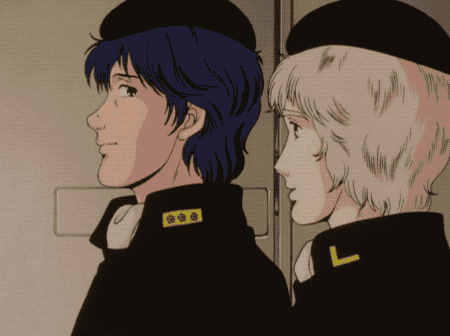
...taking marksmanship lessons from the leader of the Rosen Ritter—sweet, that’s pretty badass!—and...
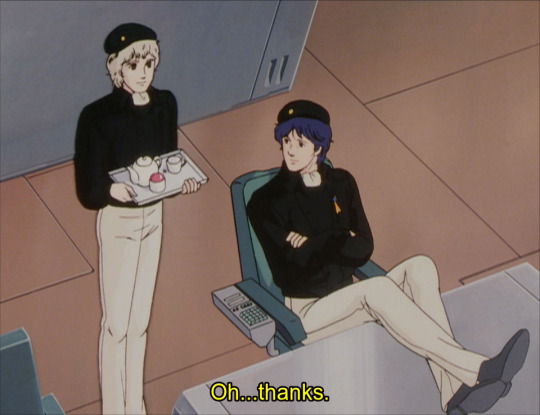
...uh, right, also still making Yang tea actually. Of course.
Julian keeps a diary for the first several months of his time on Iserlohn, written by Tanaka as one of the side stories to the novels; and in fact some of the dialogue in this episode comes from that diary rather than the novels themselves. While of course the stories are not Official Icebergs Canon, episode 17 is the only Alliance episode that takes place fully during the time span of the diary, and Icebergs-canon or not the diary is too fucking adorable for me to resist peppering this post with quotes from it. It’s never been officially translated into English, so all translations are by me.
On Yang
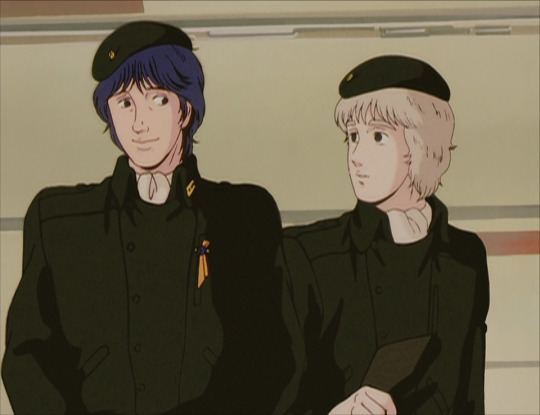
“I accidentally only wrote about Yang so far. I should write about myself a bit.” —Julian’s Iserlohn Diary, first entry, p. 12
Julian’s world revolves entirely around Yang. This has never been subtle: From the way he styles his clothes and body language to exactly match Yang’s, to his desire to emulate him by becoming a soldier, to his expression literally every time he looks at him, Julian’s idolization of Yang has been clear from the moment we first saw him.

As Elizabeth mentioned, Julian wears his heart on his sleeve; his expressions are almost always a clear window into his emotions, especially in a shot like this where no one is looking at him. That tiny smile as Yang grumbles about the party they just fled conveys so much affection.
The beautiful thing that happens when you stop relying on narrative shortcuts to define relationships is that the variety of different relationships you can depict blossoms into an infinite array. Julian and Yang’s situation certainly seems to defy simple description: Yang is Julian’s legal guardian; but as I’ve discussed, the language and affect Julian adopts around him are more those of an official subordinate of some kind than family, and indeed in his diary Julian uses words like “orderly” (従卒) or “disciple” (弟子) to refer to his role in Yang’s life. Between the two of them, Julian is both the caretaker and the protector: In episode 10 we saw him try to sooth Yang’s sour mood with tea, as well as rush to defend him physically when he’s attacked.
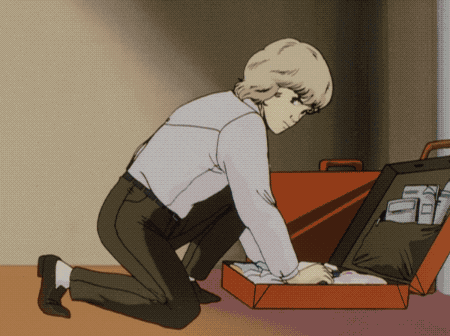
This gif will absolutely never get old.
Now that Julian’s older and stronger and discovering a talent for physical combat that Yang completely lacks, he’s even more eager to officially take on the role of protector/bodyguard. But there’s an awkward mismatch between Julian’s sincere desire to play this important (and adult) role, and Yang’s very “aww how cute” reactions.

Julian's aspirations get no help from the fansubbers' choice of translation for koitsu; I'd go with a simple "you..." here personally.

This “go keep watch” gimmick is so transparently a way to get rid of Julian for a few minutes that the seriousness of Julian’s nod breaks my heart a little.
Julian’s worship of Yang at this stage of his life is many things: overly intense in that way that emotions are at the age of I’ll-be-fifteen-this-year; more than a little unhealthy; and totally adorable. It’s unclear right now whether Julian himself sees his feelings as a crush; given his general lack of self-consciousness about it, my read is that he doesn’t. But it’s the sort of proto-crush/obsession that could easily become romantically tinged as he continues to grow up.

"Yang sucks at 3D chess." —Julian’s Iserlohn Diary, p. 68
On Frederica (...and also Yang)
As we follow Julian around Iserlohn early in the episode we find him accosting Frederica while she’s washing dishes, which means it’s time to introduce the Yang-Bechdel Test! Elizabeth has been using the Reinhard-Bechdel Test to measure whether Kircheis ever actually thinks about Annerose without simultaneously thinking of Reinhard (spoiler: he does not). Along the same lines, if we put Julian and Frederica in a room together, it’s not hard to guess the topic of conversation to which they will gravitate.

Here Julian seeks Frederica out to pick her memory about the events nine years ago on El Facil that launched Yang into his uncomfortable position of fame, and they end up giggling together over Yang’s lack of commanding presence, and speculating on how his life would have gone if he hadn’t become famous.

Like other El Facil flashbacks, this was redrawn for the DVD version to deny us this amazing vision of Yang choking on a sandwich. (Julian is speaking here.)
Bonding with Frederica by discussing Yang serves multiple purposes for Julian: He gets some insight into Yang’s past, since she met him many years before Julian did; and like his interest in Yang’s plans with Jessica in Thernusen, it lets him keep an eye on Yang’s potential love life. The friendship between Julian and Frederica is very sweet, but we’ll be continuing to keep track of how often they actually pass the Yang-Bechdel Test.
On Kircheis (and Dusty) (...and also Yang)
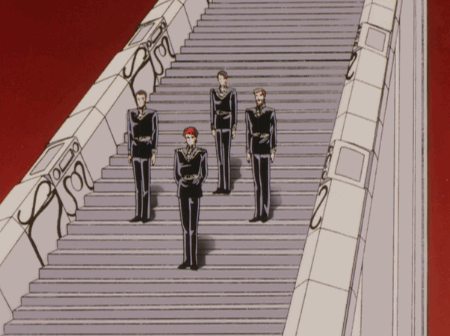
“The person standing at the front looked astonishingly good in the splendid Imperial uniform of metal on black fabric. He seemed about 30cm taller than me, towering above everyone else. Under his unusually red hair, his youthful face was both handsome and gentle. This was High Admiral Siegfried Kircheis.” —Julian’s Iserlohn Diary, p. 181
The Main Event of this episode is the prisoner exchange, the first direct contact we see between the Empire and the Alliance where no one is shooting at each other. From the moment Kircheis steps off of the Barbarossa (which must be making all the Alliance ships in the dock feel rather bad about themselves), all anyone in the whole fortress seems able to talk about is how attractive he is, starting with Dusty’s not-so-subtle dreamy gaze:
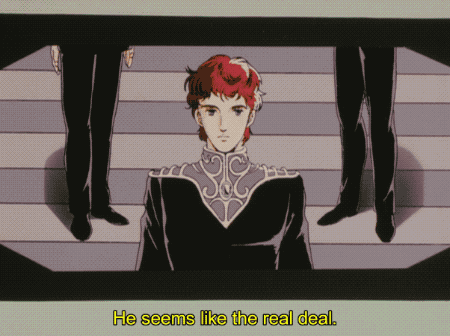
Along with Julian, Dusty’s expressions are usually quite transparent. Here he reacts to the other admirals’ shock at his mooning over an enemy commander with deflection, but come on. Dusty. We saw you.
After Julian and then Frederica both comment that Kircheis is super handsome, even Poplan and Schenkopp get in on the discussion, in an exchange the anime team felt was important enough to snag out of the diary.

“It may have been an attempt at modesty for Poplan that he didn’t say not as good-looking as himself. Perhaps due to their age difference, what Schenkopp said was more shameless.” —Julian’s Iserlohn Diary, p. 183-184. (Nah Julian, it’s just that Reinhard is so hot that even Poplan’s comfortable admitting it out loud.)
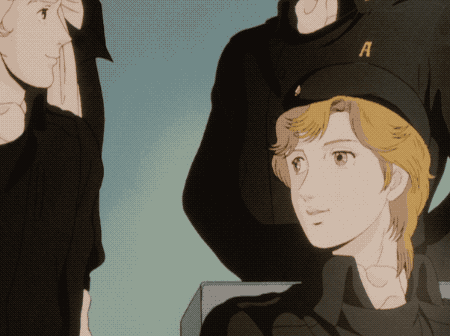
Okay to be fair, here we also see Julian and Frederica bond over how handsome Kircheis is and uh, how gay Poplan is...I guess that passes the test?
At the actual ceremony, a collection of NPC officers get in on the fun of staring in awe at Kircheis, but of course Julian and Dusty have front-row seats.
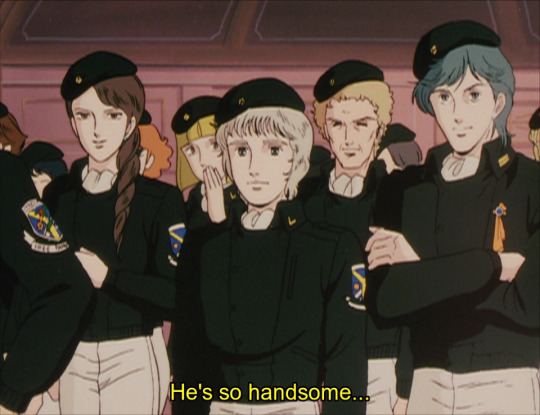
In a small-scale version of the technique we’ve seen before of drawing parallels to heteronormative relationships, the random women whispering in the background are repeating almost verbatim what Julian and Dusty both said just moments ago; we’re even focusing on Julian and Dusty in the foreground of the shot, as they gaze up at Kircheis. We get it, anime team, sheesh.
On his way out of the room, Kircheis notices Julian and speaks to him, or in Julian’s own words…

“As High Admiral Kircheis, who had been saying something to Admiral Yang, was exiting the room, the gaze from his blue eyes suddenly rested on me. He had a pleasant, kind voice. [...] I worked hard to keep my voice calm.”
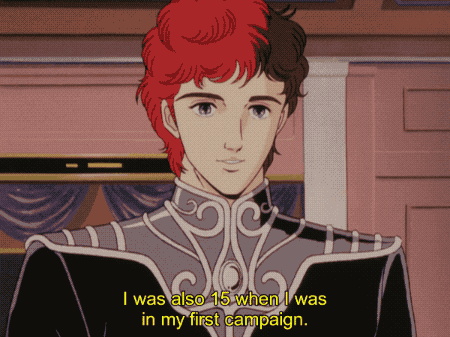
“With a smile, High Admiral Kircheis turned his tall figure and walked away from me. I stood for a while in a daze. I couldn’t believe the second in command of the enemy fleet actually talked to me.”
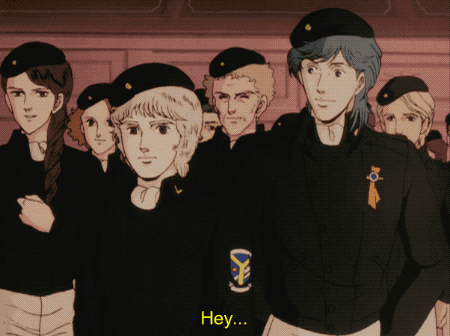
“I felt strangely unsteady below the knees, like I was standing on a floor made of jelly. If Admiral Attenborough hadn’t pushed my shoulder, I might have just stood in the emptying assembly hall forever.” —Julian’s Iserlohn Diary, p. 182-183
I’m supposed to be doing incisive, below-the-surface analysis here, but the anime team made my job pretty pointless in this case. Even without the diary commentary, between Julian’s dazzled expressions and Dusty’s blatant teasing, there’s nothing to say here except that I agree guys: Kircheis is uhh, the real deal.
But if you’re worried, like Dusty, that Julian’s loyalty might actually be tested by his newfound infatuation, fear not; at the end of the day, Julian knows where his real affections lie.

“Anyway, isn’t everyone forgetting our own representative? Admiral Yang isn’t as dashing as High Admiral Kircheis, but his completely natural, unforced manners and expressions were really charming. [...] Even if Admiral Yang were to come face to face with Marquis Lohengramm, he would calmly maintain his composure and his own pace. I’m sure of it. For me, Admiral Yang is number one, always. So what Admiral Attenborough said when he pushed me, umm—I’d called it a ‘needless anxiety,’ totally impossible. Although, if Admiral Yang himself defected, that’s a different story.” —Julian’s Iserlohn Diary, p. 184
The Secret World of Paul von Oberstein
Meanwhile on Odin, bathed in dramatic sunset hues streaming through arched columns, Oberstein continues to find that (for some reason he still can’t entirely fathom) Reinhard’s treatment of Kircheis is the one topic on which his opinion is not welcome.
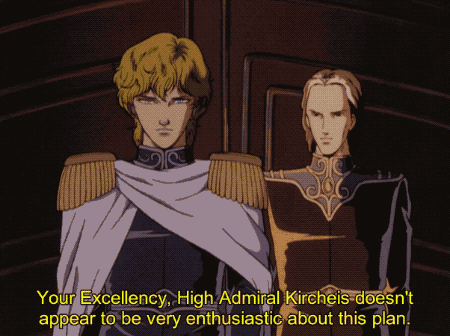
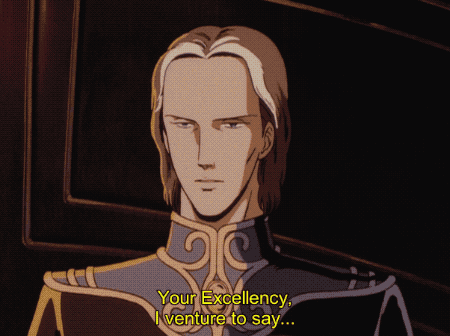
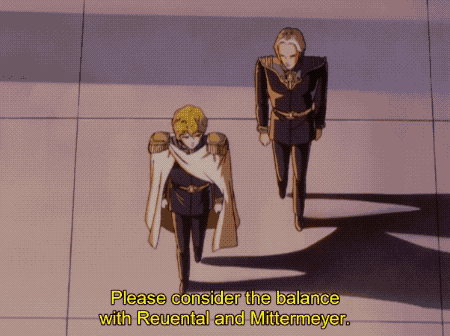
Echoing their very first interaction, in which Reinhard refused Oberstein’s request for Kircheis to leave the room (until Kircheis himself offered to comply), here Oberstein suggests that promoting Kircheis to second in command creates too much inequality among the admirals. Ever the utilitarian, Oberstein believes in using each person in the most logical and expedient way; promoting Kircheis above the other admirals, especially when Kircheis is clearly displeased with some of their recent strategies, goes against his sense of order.
Until now, Reinhard has held onto the belief that he can use Oberstein’s Machiavellianism to accomplish certain goals, while simultaneously maintaining his privileged working (and otherwise) relationship with Kircheis. But this is a delicate balancing act—Oberstein is less willing to drop his objections to a “number two” position among the admiralty than Reinhard anticipated, and Kircheis’s discomfort with Oberstein’s methods hasn’t abated even after the demonstrated success of Amlitzer.
Not surprisingly, it’s Oberstein who finally pushes Reinhard to snap and finds himself on the receiving end of some harsh words. Reinhard still doesn’t give in to any of Oberstein’s Kircheis-related demands, but his nerves are visibly frayed, and it’s clear that the fragile peace between the three of them can only last so long. Because this is LoGH and things are never simple when they can be headache-inducingly nuanced, Reinhard isn’t on his way to a trite “choose him or me” ultimatum—but there’s no doubt that he can no longer ignore the ever-widening chasm between his two closest advisors.
Stray Tidbits
The worldbuilding at the beginning of the episode is amazing, showing us around the many sides of the giant floating sphere that is Iserlohn. The fortress holds three million civilians, which is kind of weird—was there continuity in those civilian communities even as the fortress changed hands from the Empire to the Alliance? ...In any case, the “Gone with the Sun” movie poster is one of my favorite random background details. I also like how we get to see the main control room still under construction.

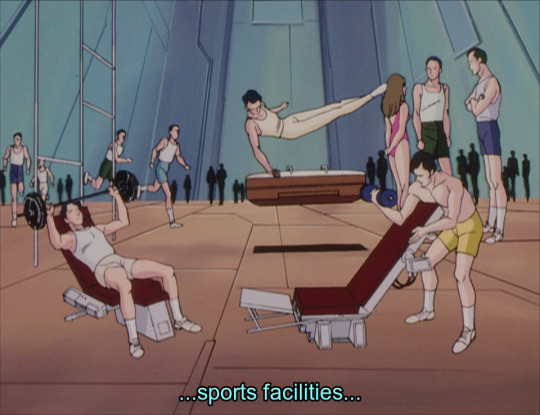
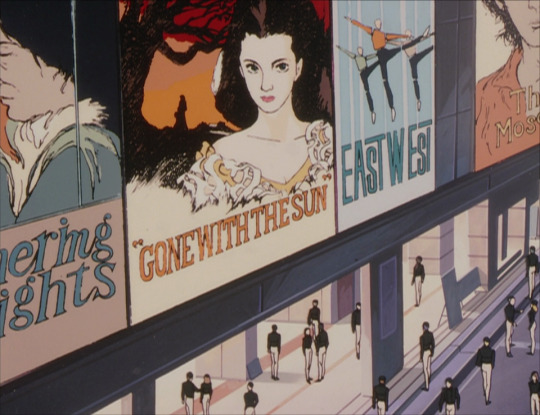
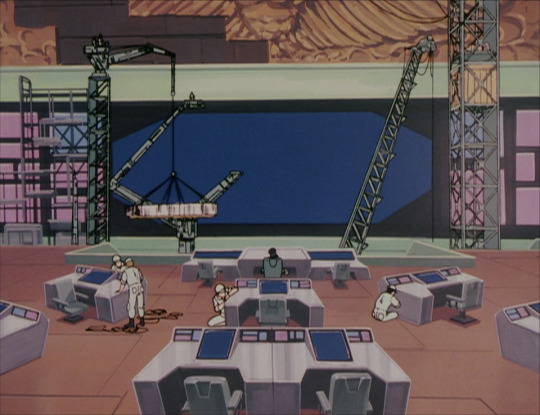
Julian, dear, you know I love you, but what in god’s name are you wearing? Is that like, a light purple sweatsuit? With a blue and yellow jacket? I support your fashion experiments but this one is a miss.
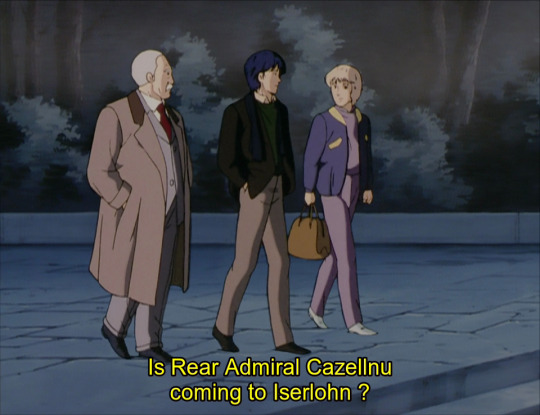
Keep the bag and shoes though, they’re working.
Yang reacting to coffee is everything. *shakes fist at DVD remasters*

“There is no coffee in our house. Even if we have guests who are on team coffee, Yang just gleefully makes them drink black tea.” —Julian’s Iserlohn Diary, p. 70
Yang and Kircheis interacting in person is a breathtaking moment, for the audience as well as for Julian. Reinhard and Yang have clearly admired each other as tacticians from the start, but Kircheis brings a more personal angle, actually articulating a wish that they could have been friends. Hmm do you think maybe this show thinks war is…...bad?

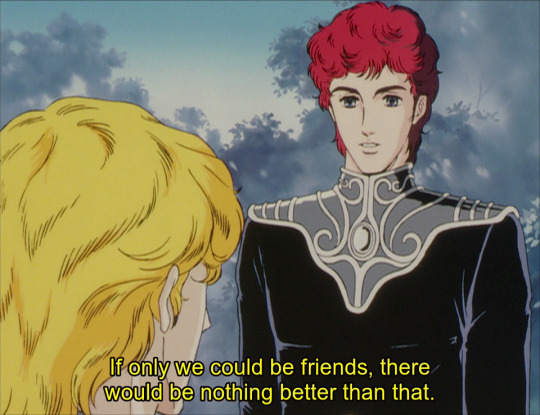
You need this Schenkopp gif in your life.
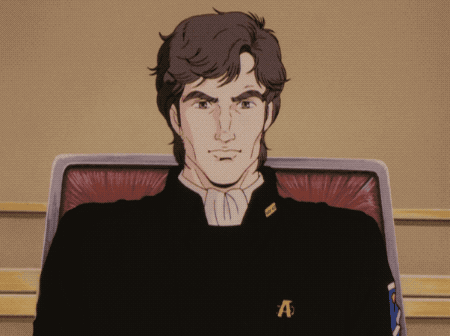
#Legend of Galactic Heroes#Legend of the Galactic Heroes#author: Rebecca#Alliance#Iserlohn#Julian#Yang#Frederica#Dusty#Kircheis#Oberstein#Julian's Iserlohn Diary#Yang-Bechdel Test#real deal
30 notes
·
View notes
Text
A Cab’s-Eye View of How Peloton’s Trucks ‘Talk’ to Each Other
New Post has been published on http://thefaerytale.com/a-cabs-eye-view-of-how-pelotons-trucks-talk-to-each-other/
A Cab’s-Eye View of How Peloton’s Trucks ‘Talk’ to Each Other


Techno-optimist prognosticators will tell you that driverless trucks are just around the corner. They will also gently tell you—always gently—that yes, truck driving, a job that nearly 3.7 million Americans perform today is perhaps on the brink of extinction. At the very least, on the brink of uncomfortable change.
A startup called Peloton Technology sees the future a bit differently. Based in Mountain View, California, the eight-year-old company has a plan to broadly commercialize a partially automated truck technology called platooning. It would still depend on drivers sitting in front of a steering wheel but it would be more fuel efficient and, hopefully, safer than truck-based transportation today.
The company employs ten professional truck drivers to help refine its tech, and I’m about to meet two of them out on Peloton’s test track in California’s Central Valley. Michael Perkins is tall, thin, and has been driving very big trucks for about 20 years. Jake Gregory is shorter and picked up truck driving in college, before taking a detour to the FBI.
We hit the highway first, because the rain has suddenly cleared. (Here’s an unfortunate reality about Peloton’s driver assistance tech: It doesn’t work great in the rain. Or snow. It’s a safety issue. More on that later.) Out on Interstate-5, Perkins’ long, white semitrailer cruises along in front of me. I’m on board the second, identical truck behind it, with Gregory behind the wheel. A small screen mounted on Gregory’s dashboard shows a camera view of what’s happening in front of Perkins’ rig. It’s like their trucks are connected. Which, in fact, they are about to be.
Peloton
Perkins radios in that he’s ready to go; Gregory says he is too. Inside the two truck cabs, each driver hits a button. Three ascending tones—la, la, la—means Peloton’s automated system has authorized the trucks to platoon on this stretch of highway. A dedicated short range communications (DSRC) connection is now established between the two vehicles. It’s like WiFi but faster and easier to secure. Now, whatever the front truck does, the back truck in will near-simultaneously “know”—and react accordingly.
Then Gregory speeds up, pulling his truck up so it’s tailgating about 70 feet from the leader. Sounds risky! But right now, the two trucks are platooning. Ours is on a kind of hopped-up cruise control, which means Gregory’s feet aren’t actually controlling the brakes or accelerator. At the same time, Gregory maintains control of his steering wheel. If Perkins were to brake, hard, Gregory’s truck would, too, faster than a human could. The robots have taken over. Kind of? Not really? More like, they’re collaborating, with some human oversight.
Peloton’s name, a reference to bicycle racing, helps explain how this platooning works. Just as the riders in the peloton, or main group of racing cyclists, preserve energy by drafting off of those around them, the following trucks in the truck platoon reduce their aerodynamic drag by drafting off the ones in front of it. The lead truck, meanwhile, get a little push. This saves fuel, according to Pelton—up to 10 percent for the following car and 4.5 percent for the first one, depending on the road and weather conditions and the following distance. It might also prevent crashes, since this tech has much faster reaction times (about 30 milliseconds) than puny humans (about 1 to 1.5 seconds).
Other companies in Europe, China, Japan, and Singapore are seriously experimenting with truck platooning. The American military has hosted platooning demonstrations. Just this week, the US Department of Transportation gave out $1.5 million in grants to universities studying the tech. And Peloton has tested in a bunch of US states: Arizona, California, Michigan, Florida, and Texas, where Peloton has immediate plans to run the majority of its routes.
Right now, the company says it does have paying customers, though it won’t reveal their names until later this year. According to Josh Switkes, the company’s CEO, some pair of US truck drivers are running a route while platooning on a Peloton-enabled truck every day.
And testing continues, on the software in its office, on its test track, and on actual highways, where it confirms the technology’s reliability. “The highway or field is not for testing,” Switkes says. “The goal of testing is to find failures, and you don’t want those failures to be on public roads.” In a report released today, the company lays out this approach to safety for regulators and interested industry parties alike. It borrow from automotive processes more than Silicon Valley-style software ones, amounting to something like, easy does it.
It turns out, the linking-up move Perkins and Gregory just performed on I-5 is one of the most safety-critical parts of truck platooning, says Switkes. The moment when the following truck has to move faster than the one in front of it is the most dangerous part.
To make sure drivers like Perkins and Gregory don’t crash into each other, or anyone else, Peloton needs to make sure that the platooning drivers know how the tech works. (Right now, the company’s driver training process takes about a half a day.) It also needs to understand exactly how heavy the trucks are when they start platooning, how their brakes are working, and how their tires function. For this reason, the company says, it has carved out partnerships with its suppliers, which means its trucks are built from the ground up with platooning in mind.
This is also why Peloton doesn’t platoon in the rain right now, or in the snow: The company can’t yet gauge exactly how tires deteriorate over time, which means it can’t quite predict how they’ll react in a hard-braking situation. Worn tires might slide in the moisture, leading to a domino chain of truck crashes. So no platooning in the Midwest in the winter, or anywhere during a rainy spring. “On certain routes, it’s a significant limitation,” says Switkes. “But we’re erring on the side of safety.”
And if that seems a little dull, Switkes would tell you that’s the point. His favorite word is “pragmatic,” and he doesn’t believe driverless trucks will prowl the highways any time soon. The technology is too complicated, he argues, and developers will have to go through years of safety testing before they’re ready for the roads—and before the public feels safe riding in their own bitty cars around 50,000-pound robot trucks. So Peloton is going all in on making human-based driving both safer and more efficient. With a bit of tech boost.
Not all manufacturers agree: In January, Daimler announced it would stop its platooning development to focus on autonomous trucking. Tests showed that “fuel savings, even in perfect platooning conditions, are less than expected,” the German company wrote in a press release. “At least for U.S. long-distance applications, analysis currently shows no business case for customers driving platoons with new, highly aerodynamic trucks.”
Platooning advocates disagree, but even the most supportive believe finding a market for this trucker assistance isn’t simple. Steven Shladover is researcher with the California Partners for Advanced Transportation Technology program at UC Berkeley. He has studied platooning for two decades, and points out that the truck industry would need to execute a fair bit of choreography to pull off platooning. Fleet operators would have to coordinate deliveries, matching up trucks heading in the same direction at the same time. “Does the truck industry see enough of a benefit in platooning to fit it into their operational strategies?” he says.
While everyone in trucking waits to find out, Perkins and Gregory head back to Peloton’s test track and proceed to show off a few, freakier moves: some hard braking, some driving side-by-side to prove that the trucks can still “talk” to each other in that position. At one point, another company employee in a white Toyota Tundra cuts into the 55-foot space between the two trucks, and they smoothly part to make room for him. Maybe platooning will improve life for truckers—too bad it can’t fix the problem of everyday reckless drivers, too.
More Great WIRED Stories
0 notes
Text
A Cab’s-Eye View of How Peloton’s Trucks ‘Talk’ to Each Other
New Post has been published on http://ritzywordpressthemes.com/a-cabs-eye-view-of-how-pelotons-trucks-talk-to-each-other/
A Cab’s-Eye View of How Peloton’s Trucks ‘Talk’ to Each Other


Techno-optimist prognosticators will tell you that driverless trucks are just around the corner. They will also gently tell you—always gently—that yes, truck driving, a job that nearly 3.7 million Americans perform today is perhaps on the brink of extinction. At the very least, on the brink of uncomfortable change.
A startup called Peloton Technology sees the future a bit differently. Based in Mountain View, California, the eight-year-old company has a plan to broadly commercialize a partially automated truck technology called platooning. It would still depend on drivers sitting in front of a steering wheel but it would be more fuel efficient and, hopefully, safer than truck-based transportation today.
The company employs ten professional truck drivers to help refine its tech, and I’m about to meet two of them out on Peloton’s test track in California’s Central Valley. Michael Perkins is tall, thin, and has been driving very big trucks for about 20 years. Jake Gregory is shorter and picked up truck driving in college, before taking a detour to the FBI.
We hit the highway first, because the rain has suddenly cleared. (Here’s an unfortunate reality about Peloton’s driver assistance tech: It doesn’t work great in the rain. Or snow. It’s a safety issue. More on that later.) Out on Interstate-5, Perkins’ long, white semitrailer cruises along in front of me. I’m on board the second, identical truck behind it, with Gregory behind the wheel. A small screen mounted on Gregory’s dashboard shows a camera view of what’s happening in front of Perkins’ rig. It’s like their trucks are connected. Which, in fact, they are about to be.
Peloton
Perkins radios in that he’s ready to go; Gregory says he is too. Inside the two truck cabs, each driver hits a button. Three ascending tones—la, la, la—means Peloton’s automated system has authorized the trucks to platoon on this stretch of highway. A dedicated short range communications (DSRC) connection is now established between the two vehicles. It’s like WiFi but faster and easier to secure. Now, whatever the front truck does, the back truck in will near-simultaneously “know”—and react accordingly.
Then Gregory speeds up, pulling his truck up so it’s tailgating about 70 feet from the leader. Sounds risky! But right now, the two trucks are platooning. Ours is on a kind of hopped-up cruise control, which means Gregory’s feet aren’t actually controlling the brakes or accelerator. At the same time, Gregory maintains control of his steering wheel. If Perkins were to brake, hard, Gregory’s truck would, too, faster than a human could. The robots have taken over. Kind of? Not really? More like, they’re collaborating, with some human oversight.
Peloton’s name, a reference to bicycle racing, helps explain how this platooning works. Just as the riders in the peloton, or main group of racing cyclists, preserve energy by drafting off of those around them, the following trucks in the truck platoon reduce their aerodynamic drag by drafting off the ones in front of it. The lead truck, meanwhile, get a little push. This saves fuel, according to Pelton—up to 10 percent for the following car and 4.5 percent for the first one, depending on the road and weather conditions and the following distance. It might also prevent crashes, since this tech has much faster reaction times (about 30 milliseconds) than puny humans (about 1 to 1.5 seconds).
Other companies in Europe, China, Japan, and Singapore are seriously experimenting with truck platooning. The American military has hosted platooning demonstrations. Just this week, the US Department of Transportation gave out $1.5 million in grants to universities studying the tech. And Peloton has tested in a bunch of US states: Arizona, California, Michigan, Florida, and Texas, where Peloton has immediate plans to run the majority of its routes.
Right now, the company says it does have paying customers, though it won’t reveal their names until later this year. According to Josh Switkes, the company’s CEO, some pair of US truck drivers are running a route while platooning on a Peloton-enabled truck every day.
And testing continues, on the software in its office, on its test track, and on actual highways, where it confirms the technology’s reliability. “The highway or field is not for testing,” Switkes says. “The goal of testing is to find failures, and you don’t want those failures to be on public roads.” In a report released today, the company lays out this approach to safety for regulators and interested industry parties alike. It borrow from automotive processes more than Silicon Valley-style software ones, amounting to something like, easy does it.
It turns out, the linking-up move Perkins and Gregory just performed on I-5 is one of the most safety-critical parts of truck platooning, says Switkes. The moment when the following truck has to move faster than the one in front of it is the most dangerous part.
To make sure drivers like Perkins and Gregory don’t crash into each other, or anyone else, Peloton needs to make sure that the platooning drivers know how the tech works. (Right now, the company’s driver training process takes about a half a day.) It also needs to understand exactly how heavy the trucks are when they start platooning, how their brakes are working, and how their tires function. For this reason, the company says, it has carved out partnerships with its suppliers, which means its trucks are built from the ground up with platooning in mind.
This is also why Peloton doesn’t platoon in the rain right now, or in the snow: The company can’t yet gauge exactly how tires deteriorate over time, which means it can’t quite predict how they’ll react in a hard-braking situation. Worn tires might slide in the moisture, leading to a domino chain of truck crashes. So no platooning in the Midwest in the winter, or anywhere during a rainy spring. “On certain routes, it’s a significant limitation,” says Switkes. “But we’re erring on the side of safety.”
And if that seems a little dull, Switkes would tell you that’s the point. His favorite word is “pragmatic,” and he doesn’t believe driverless trucks will prowl the highways any time soon. The technology is too complicated, he argues, and developers will have to go through years of safety testing before they’re ready for the roads—and before the public feels safe riding in their own bitty cars around 50,000-pound robot trucks. So Peloton is going all in on making human-based driving both safer and more efficient. With a bit of tech boost.
Not all manufacturers agree: In January, Daimler announced it would stop its platooning development to focus on autonomous trucking. Tests showed that “fuel savings, even in perfect platooning conditions, are less than expected,” the German company wrote in a press release. “At least for U.S. long-distance applications, analysis currently shows no business case for customers driving platoons with new, highly aerodynamic trucks.”
Platooning advocates disagree, but even the most supportive believe finding a market for this trucker assistance isn’t simple. Steven Shladover is researcher with the California Partners for Advanced Transportation Technology program at UC Berkeley. He has studied platooning for two decades, and points out that the truck industry would need to execute a fair bit of choreography to pull off platooning. Fleet operators would have to coordinate deliveries, matching up trucks heading in the same direction at the same time. “Does the truck industry see enough of a benefit in platooning to fit it into their operational strategies?” he says.
While everyone in trucking waits to find out, Perkins and Gregory head back to Peloton’s test track and proceed to show off a few, freakier moves: some hard braking, some driving side-by-side to prove that the trucks can still “talk” to each other in that position. At one point, another company employee in a white Toyota Tundra cuts into the 55-foot space between the two trucks, and they smoothly part to make room for him. Maybe platooning will improve life for truckers—too bad it can’t fix the problem of everyday reckless drivers, too.
More Great WIRED Stories
0 notes
Text
7:15, upon the sounding of Weiss’ Passacaglia:
You are not the person you used to be - you cannot become the person you once were. You are you as you wake up each day — you are you as you choose to live and through how you choose to create and depict yourself.
A SELF-FASHIONED MASS OF CREATION. STOP.
TAKE IT AS IT COMES. STOP.
8:37, upon receiving a text message:
If we conceive of products of industry as armaments designed to further alienate us from society, then the following becomes clear:
We speak more than ever, but no longer to each other. All our voices become lost in the mediating process, refracted and abstracted via industrially formed communicative mediums. These mediums operate under the veneer of connectedness, but are ultimately concerned with seeking power and control; their overseers shape and direct our discourse, establishing parameters within which the illusory conceptions of freedom of expression and individuality arise. From what was once the lack of ego, there is now the “I” of power; “I” speaks power and “I” is power. To speak as a subject, to converse and relay opinions is necessarily to universalise one’s own subjectivity. To have an opinion is necessarily to disengage, to dislike, to negate the world from which we arise. What “I” say, what the “I” speaks applies to all. To remove the I, however, to remove the subject is to remove ourselves. If one is to stand around a corner, the other side of the wall does not exist until one has taken the steps towards it. No, but this depends on experience not the reality (?) that exists within the mind. What would then happen, say, if another is standing around the corner? The confrontation of two universalised subjectivities - four in a house. Two-hundred on any given street. One-thousand in a neighbourhood. Intersection. Six billion possible confrontations.
10:33, upon stepping outside, a sketch, a sensation, sensibility:
Are we not gifted with some unique kind of spatial memory that transcends temporal borderlines? What else can explain a certain area or city as feeling like ‘home’ or a place where one can entirely belong and melt away into the sounds of passing cars, doors opening, and a jug falling off the side of a ruined outdoor table setting?
Barthes paraphrases Socrates and mentions the atopos — the undefinable, the unclassifiable, but if there is more than one place that will feel like home in the course of one’s life, then is there a classifiable type that appeals to an individual’s disposition?
10:35, upon the viewing of a poster:
A humanely humorous work of anti-war sentiment operating under the veneer of poetry.
11:44, noticing my thoughts to be distinct from my words:
It is an indescribable feeling that looms over me; almost resembling a visceral feeling of dread and utter helplessness. It has overcome me before, but this is noticeably different; a hollowness, a constricting echo chamber. While for the moment I am relatively pain free, I am fearful that it is only a transitory and furtive moment of respite in and amongst the vicissitudes of life. I feel as if a friendship that is true and pure should not bog itself down with the kinds of preconceptions regarding their own natures.
For the moment, all that keeps me alive is the hope that I may one day experience something other than the Black.
Why must I not speak? What have I allowed myself to become? Poor, poor Lion of the West - dethroned and thrown into the wilderness to fend, naked and alone! Woe!
15:13, a storm approaches, looking forward toward a night without stars:
When looked at from a glance of time above,
Our births are but a sleepy forgetting
Our lives, a brief wait in the drawing room
Our deaths, the final debts we all must pay.
To seek below that which rests in the heart of Man,
Wait only you can thro the pangs and darts
That life so readily inflicts.
Wait you must, no other choice you have,
Till the hour at which you will greet our Artifex.
16:21, on the remembrance and return of pain:
The following applies to all things: when we lose something, it is not the absence of the thing in itself that grieves us, but how the object itself made us feel. Once more, it is the return of the ego. Εγώ. The subject-object relation. Unbreakable. “To grieve something is inherently a selfish act” it has been said.
The same can be said of illness and the loss of one’s bodily autonomy.
But how to deal with it, then?
Remember that what you have control over are your thoughts, opinions, and perceptions regarding external events. What if I am self-contained? Existing solely within myself?
Find new ways to relive those emotional sensations and impressions, but remember them for what they are: ephemeral, fleeting, and passing moments of time that plague the one who forgets we are caught in a position of vulnerability that is not quite possessive of tomorrow yet certain of our time in the yesterday.
Unbound.
16:50, the key is to read and apply both:
YB BH MJ GN AC UC BH AH AC GI IZ. STOP.
20:55, the night music of the streets of the city:
It is night; the street is filled with the sounds of music emanating from small windows above the bar opposite. It sounds terrible. A mass of offensive white noise. Perhaps Adorno could decipher its meaning. I just shudder at the thought. Boisterous chatter from the tables beside me, it is the season of Advent, after all. At once, the chair is pushed, sirens rush past, and the raucous screams of inebriated youths pierce my own version of silence.
Heart rate increases. Throat closes. Hands cover the forehead and slide down the face. The body trembles. Overstimulation does not equate to the overwhelming feeling of sensory overload. I take a stand, though an unconfident one. Back streets get me home. I get into bed (notice the iceberg). Perhaps with sleep the new morning will bring solace (?).
12:35, upon regarding the seeping moonlight dimly illuminating the form of my immediate surroundings:
I read somewhere that if we are to exist as foils for the world, to capture and measure its bounds and edges, then it must first be shown that the world itself possesses its very own form. I lift my knee and the blanket itself changes material form, but does not lose its blanketing quality. There are far too many facets to understand. What of the unreliability of the senses? I can barely see through the darkness, yet my mind knows there to be a form to the room, to the outside. But what of conceivability as probability? In the moment before I open my front door, there is sunshine, hail, rain, and darkness all simultaneously occurring on the planes of (meta)physical existence. But what of the open door? What of he who knocks at the door? I have not seen them, but my mind knows someone to be there. Can I trust it?
4:53, the sun is due to rise in opposition to the Moon which remains luminary and steadfast. Two eternal glows.
A fumble in the dark.
The postcard from her reads “c’est la nuit qu’il est beau de croire à la lumière”. It is from Edmond Rostand, from which book I still do not know. I have not asked. I have never needed to know. I am understanding the evolution of myself, of my mind. Reading those lines seven months ago instilled in me a feeling of expansive ease, as if the distance travelled by the postcard was the unit of measurement by which I could measure and quantify my own sentiments.
Sudden elation.
The heart warms, mellows in this body (this mass of self-fashioned creation).
Now I am not so sure I’d agree.
It is still night and I am seeing this light she speaks about, it is beautiful to witness, pretty to think about. The illumination of form, of my form, of the bed, of the room, of the outside. To witness the celestial brilliance of both heavenly glows should surely bring solace.
7:15, upon the sounding of Weiss’ Passacaglia:
I am reminded of the guilt — of those I have hurt in some way, of those I continue to hurt in thinking such things, in allowing such thoughts to persuade my actions. To go on living as feeling undeserving of the quiet elation one encounters in life — to disbelieve in the possibility of satisfaction and doing well by and for others. My back seizes as I try to lift my torso from out of the bed which for the last nine months has come to represent the antithesis of sleepy forgetting and nightly respite and rejuvenation. Instead, the idea of sleep only guarantees the swiftness of the passing night and the subsequent resurrection of feeling.
“Surely the work of demons! What else?”
Is this to be looked forward to?
5 notes
·
View notes
Photo

A First Hand Experience of the Kaikoura Earthquake Sequence
At 12:02am on Monday 14th November 2016 a 7.8 Magnitude quake struck near the small town of Waiau, South Island, New Zealand. This is what it felt like.
It’s 12:01am on Monday morning and I’m curled up in bed with my girlfriend trying to catch some sleep before our flight out of Wellington in the morning. Our host's flat is 10 floors up, giving excellent views of the central business district in which it's situated. Hailing originally from the UK, I have spent the last year living in Christchurch and thought that a weekend trip to New Zealand’s capital might be a nice break from several weeks’ worth of panicked work.
What had been a relaxing and enjoyable weekend was about to change very quickly. At 12:02 I’m woken up by a weak shaking, as if the bed and entire apartment has started to vibrate gently. In Christchurch, it's common for houses to shake like this when large trucks or busses drive past, however being 10 floors up this shaking can only mean one thing: Earthquake.
I sit up in bed and wait. The shaking will either gently subside and I can go back to sleep or it will suddenly intensify. I look around the room noting that nothing hangs from the ceiling but that the only source of cover is a small desk. It's barely big enough to shield one of us and its proximity to the floor to ceiling glass windows make me think twice. Being caught in a big quake is bad enough – staring down 10 floors while desperately holding on seemed worse.
After the first few seconds the shaking intensifies, the gentle vibrations being replaced with sudden shunting motions. I leap out of bed – simultaneously grabbing my partner and my clothes. Running out of the building isn’t an option – horror stories of Christchurch residents having stairwells bend and twist underneath them and of people opening doorways only to find staircases entirely missing means leaving the building isn't an option. Not until it stops shaking.
As the violence of the shaking continues items begin to fall off the wall – first a book swiftly followed by a mirror. Having discarded the desk as an unfeasible option we both head for the door frame. As I go to turn the door handle I hear the wine bottles in the hall way starting to smash, with some hitting the door to our room. If I don’t open the door, then I can’t stand in the doorway and can’t utilise the stability it provides. However, if I do open it I risk being hit by glass and other debris which is now loose in the hallway.
I decide to remain poised – if the glass bottles stop but the shaking continues then I open the door but up until then I remain trapped in the room. At this point the shaking is at its most violent, we can hear the building groan as it sways and I desperately struggle to remain upright. Realising that I am completely hopeless – that nothing I can do can influence my chance of survival and that my entire existence rests on the integrity of a building I know nothing about – I grab my partner and we hold each other as we wait for the shaking to stop.
After what feels like a decade (somewhere in the region of 1 to 2 minutes) the building comes to a rest. I hurriedly dress myself and then slowly ease open the door into the corridor. Before I survey the damage I call out to our host to make sure he is ok. He appears in the hallway looking confused, his previously immaculate flat now running red with ruined wine. I turn back into the room, conscious of the fact that we have mere seconds until the aftershocks begin but also aware that this may be the last time we are allowed into this building over the coming days. I tell my partner to grab all our belongings and we desperately begin to fumble in the dark, the earthquake having blown the fuses for the apartment.
We then race downstairs, saying silent prayers that we can make it down the ten flights before the next earthquake rolls in. Once outside our attempts to understand what has just happened begin. My first port of call is an app called ‘GeoNet Quake’ which provides information on where the earthquake occurred and how strong it was. I look at the screen in horror – a 7.2 centred in Culverden, in the South Island. This area is far closer to my hometown of Christchurch than it is to Wellington and I furiously begin contacting my friends to see how they are. Christchurch is still recovering from the 2010/2011 sequence that took 185 lives and decimated what was once the country’s second largest city (see here for more information: http://bit.ly/2jC3iYm). Even if people were ok physically, the shaking was sure to have brought back memories that have haunted residents for the past 5 years.
Partially thanks to a Facebook check in post, I begin to realise that everyone I care about is ok. As we sit outside feeling the aftershocks rumbling through, I suddenly realise I have no idea what to do now. Desperate Google searches bring up nothing and having never lived in Wellington I am oblivious to any emergency procedures that may be in place. Alarms are going of across the city and emergency vehicles streak past, filling the night with an array of haunting sirens. Other people begin to gather outside, each looking as bewildered as the next. People see our rucksacks and check we are ok and that we have somewhere to stay before walking aimlessly on into the night.
As a potential violent aftershock rumbles through I check Geonet. Panic begins to rise as I notice some of the aftershocks are beginning to arrive from the North Island not the South. Wellington is sat right on top of a fault that has the potential to bring the capital to its knees. It’s not unknown for one earthquake to trigger others on nearby faults and I catch myself before I go into full blown panic. I cross my fingers and continue to scroll through the list of aftershocks.
As I scroll one earthquake captures my eye. Registering a high 5 or low 6 it appears to have been centred in the seaside town of Kaikoura. Once again my stomach drops. Kaikoura is a tourist hotspot famous for the abundance of seals, dolphins and whales that visits its shores. The reason for its abundance of sea life? A huge offshore canyon where nutrients rise and provide a bountiful feast for its watery inhabitants. It’s also a canyon that has the potential to suffer submarine slides during strong earthquakes. This in turn can trigger tsunamis.
It’s now about 1 or 2 hours post-quake, and once again I desperately try to access information on what is going on. In my panicked searching, I find a tweet from a government site stating that a Tsunami warning has been put out for the entire east coast of New Zealand. Back in Christchurch I live in one of the seaside suburbs, one of the suburbs that is now at risk from the quake induced waves. I copy the tweet and forward it on to my housemates – both seeming surprised having yet to receive any information from the New Zealand Defence Force website. Despite the tsunami warning sirens remaining silent, and several websites still oblivious to the threat, they make their way up into the hills to spend a restless night in their car wondering if our house would stand up to the waves headed towards shore.
Feeling more useless than ever I continue to hunt for updates – trying to piece together what has happened. I knock on the window of a nearby car that has a family huddled inside intently listening to the radio. They kindly fill me in on the news but its once again nothing of real substance. I consider our options; no-one has come around to check our building and the aftershocks are still consistently hitting with such force that I have no wish to return to our 10th storey apartment. However, with the tsunami warning out a decision must be made: to head towards the hills encircling the city or to return to the apartment.
Not knowing the damage to the hills or the infrastructure leading there I decide to return to the apartment. We sprint up the 10 flights of stairs and huddle in the only part of the flat not showered in glass or unknown fluids. I set my phone to the local radio station and for the next few hours we sit, huddled under a blanket wincing with each aftershock – waiting to see if this will be another big one and send us running for cover.
After 3 or 4 hours our host returns and we attempt to clean up the apartment. Once that is complete we decide to try and get some sleep. My partner swiftly falls asleep while I lay awake paralysed with fear that the next earthquake will set off the fault slumbering beneath us.
Thankfully damage to infrastructure in Wellington was minor and we were able to fly back to Christchurch the next day. The relief of being in the air and therefore being unable to feel any aftershocks was huge even if short lived. Back in Christchurch we could still feel the aftershocks rocking through and for 24 hours had the car boot packed in case another tsunami warning was released and we had to head to the hills.
While the experience was pretty scary it hasn't left me with any residual anxiety. I do have a greater appreciation of the fact that the earth can move suddenly and without warning (even though I'm a geologist) and that preparation is key to making it through.
Watson
For more information on the Kaikoura Earthquake check out our other posts: https://tmblr.co/Zyv2Js2EhM2SU https://tmblr.co/Zyv2Js2F7Gy_k https://tmblr.co/Zyv2Js2H0eWxk Image Credit: Kate Pedley (http://bit.ly/2jSDc3E) and Tamsin Laird For more awe-inspiring images of post quake features the UC Science (http://bit.ly/2j6XMOI) facebook page
#Kaikoura#Earthquake#Geology#Geologist#New Zealand#Story#November#Wellington#Apartment#Shake#Seismic#natural disaster#Travel#Danger#Aftershock#The earth story
135 notes
·
View notes